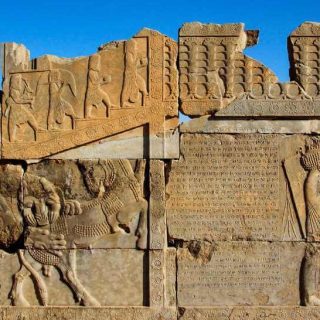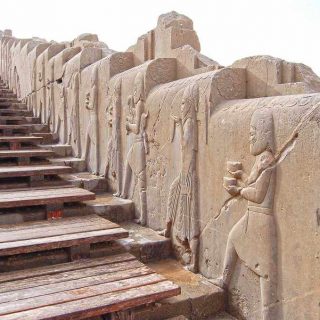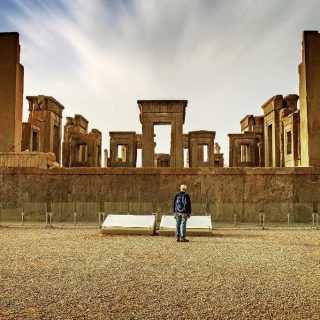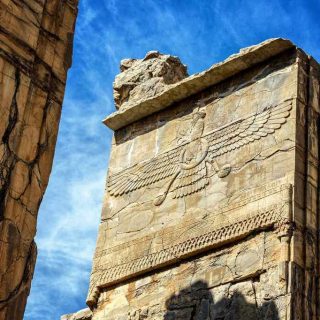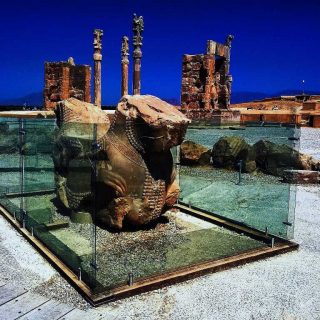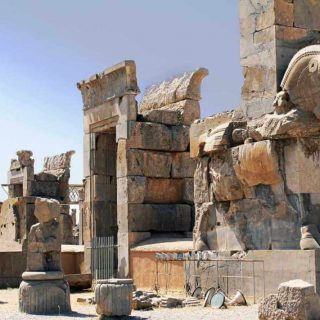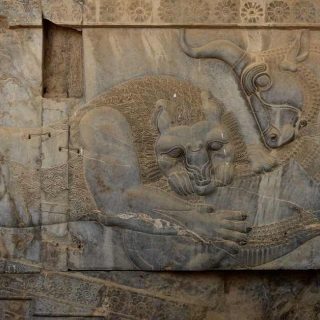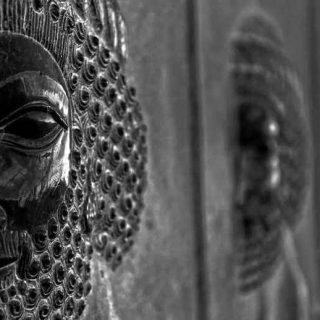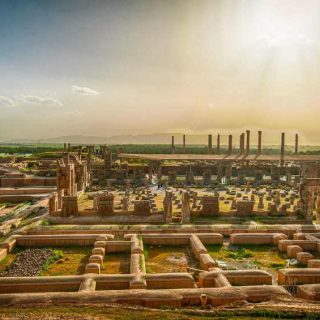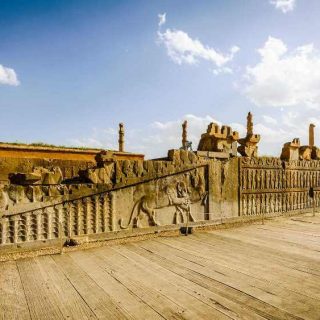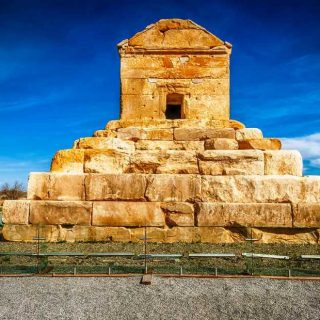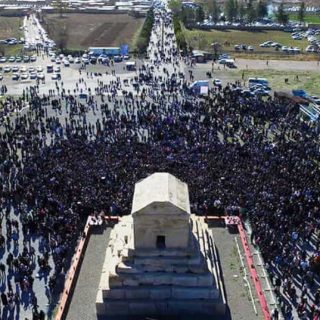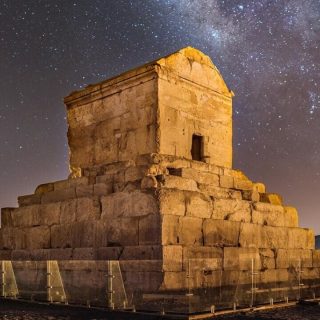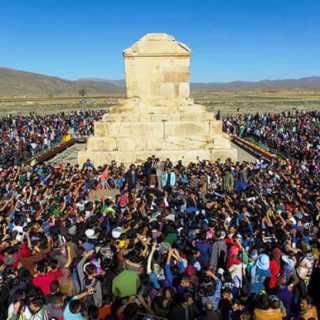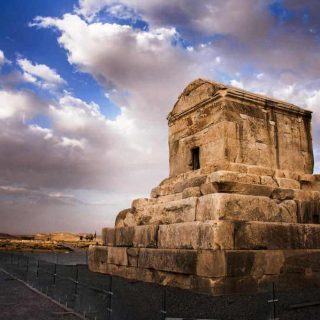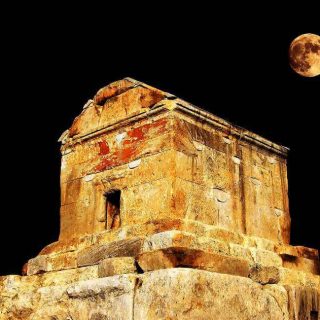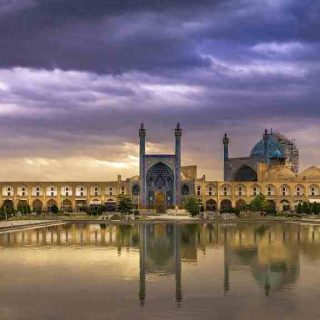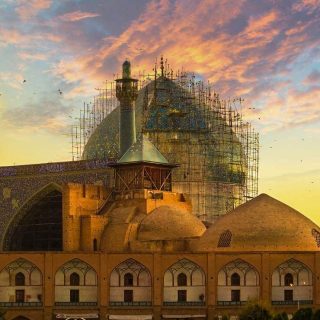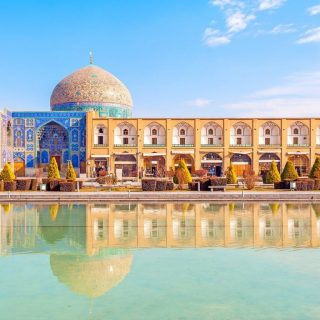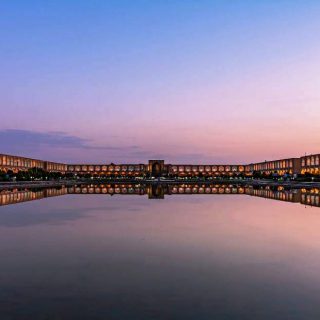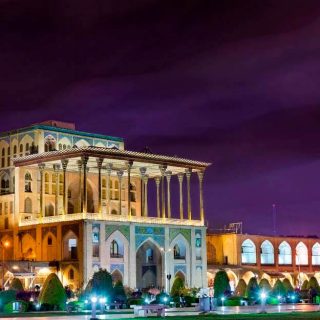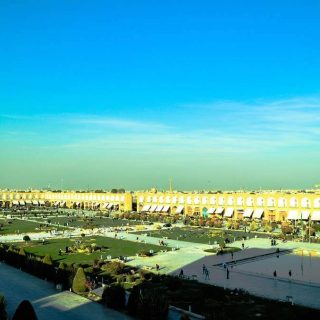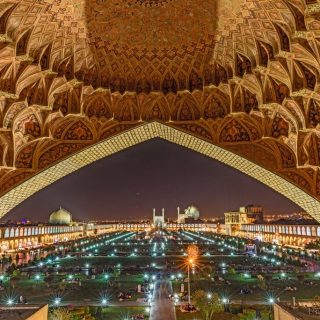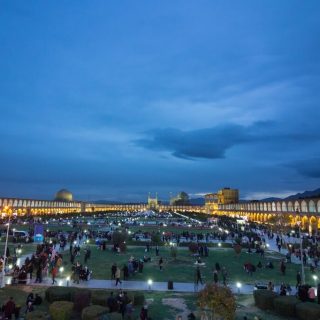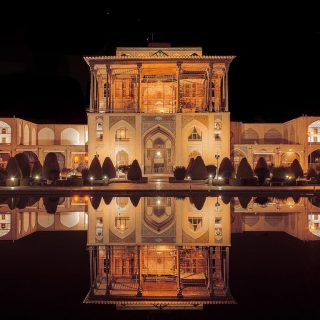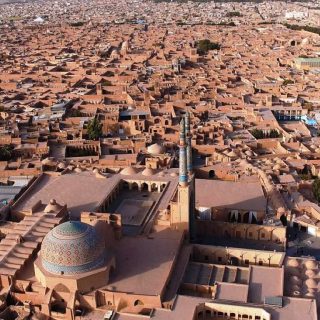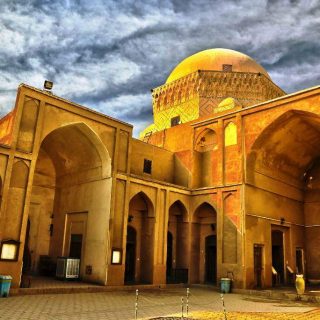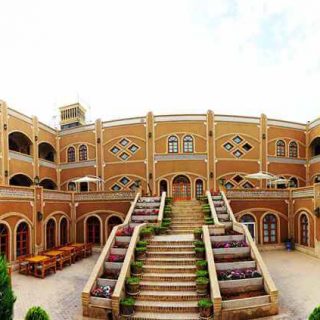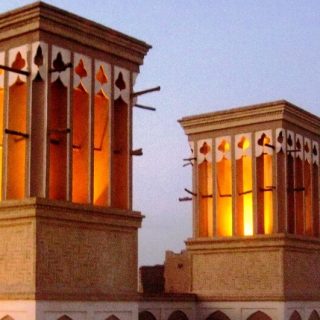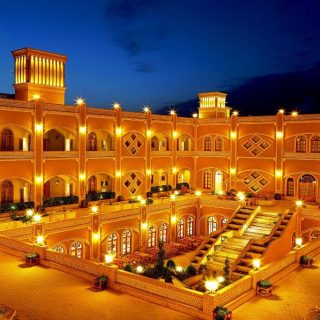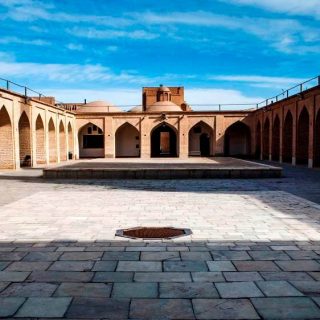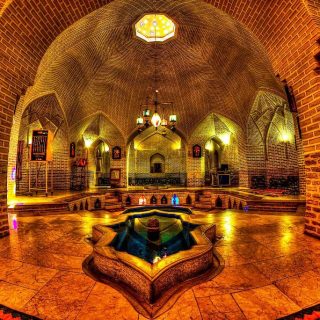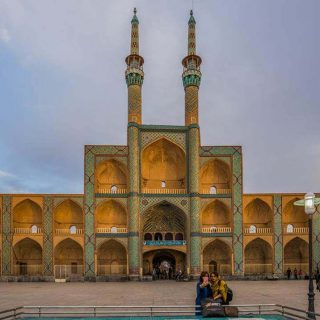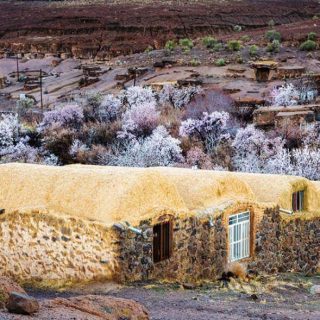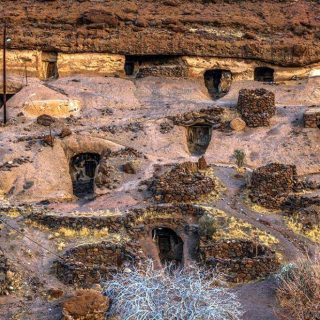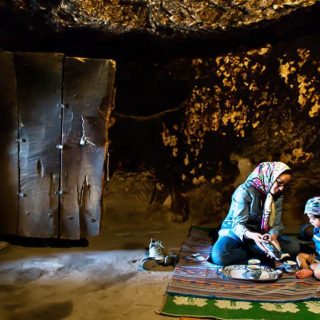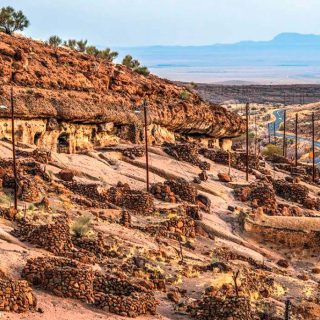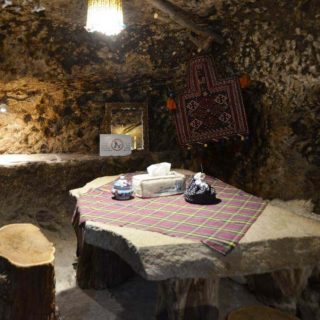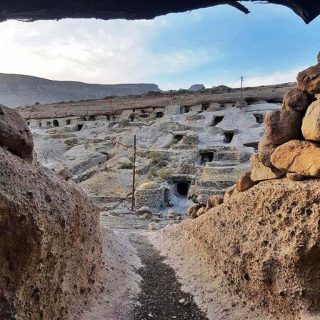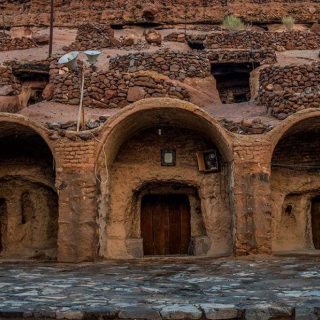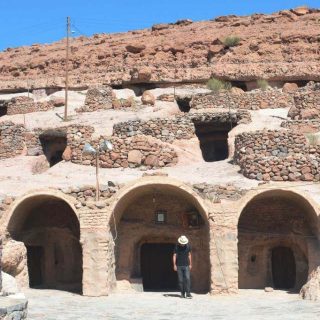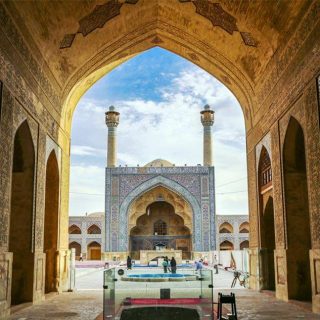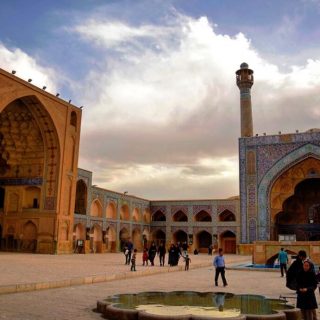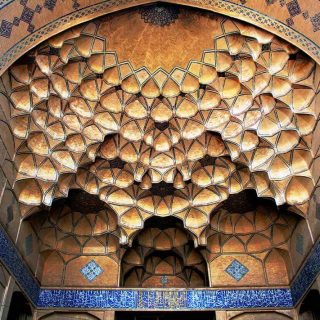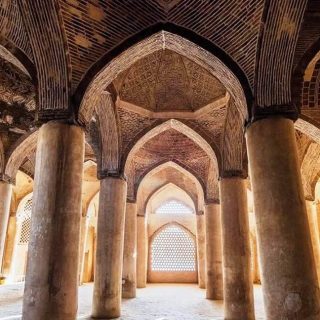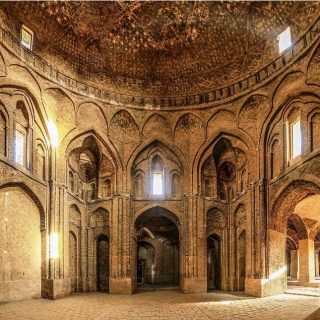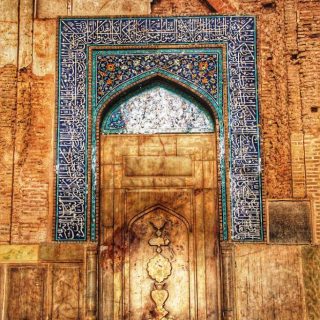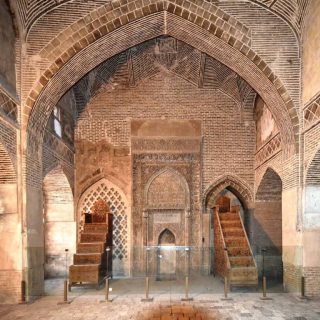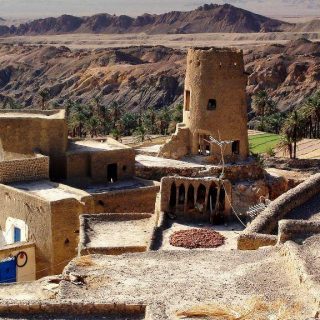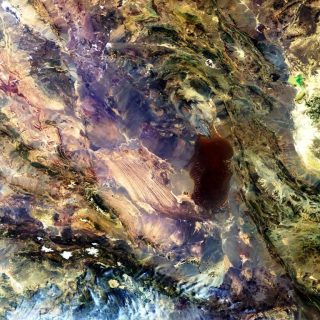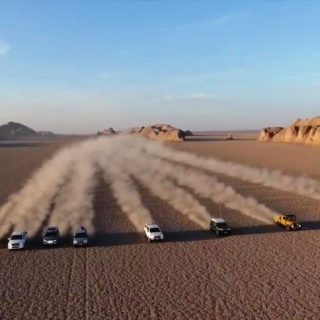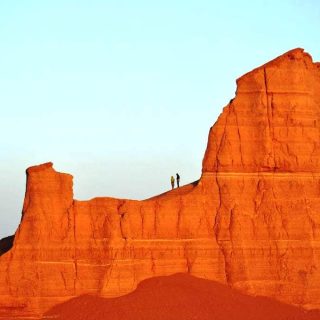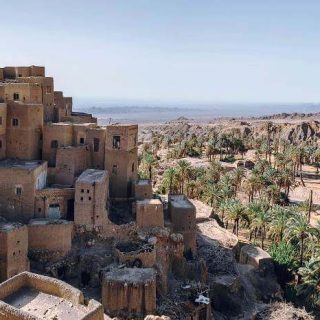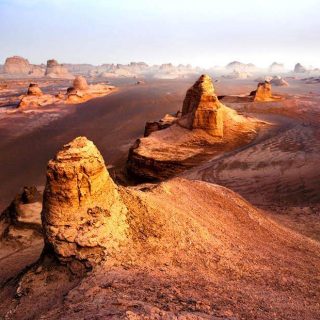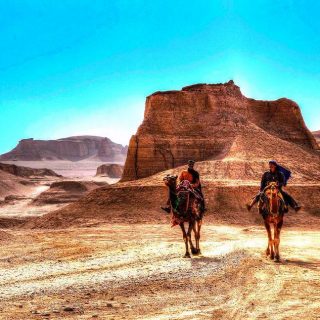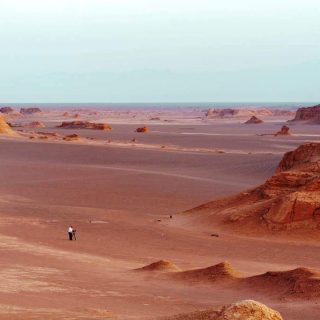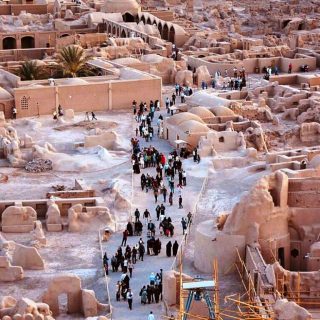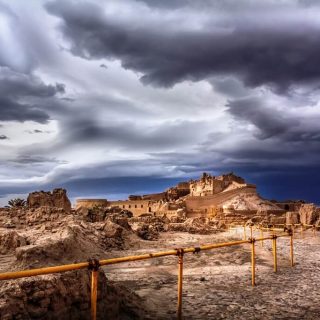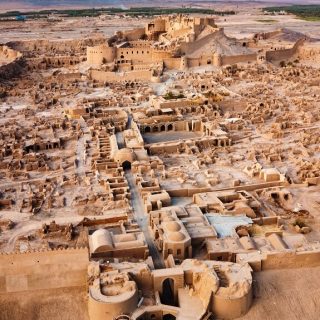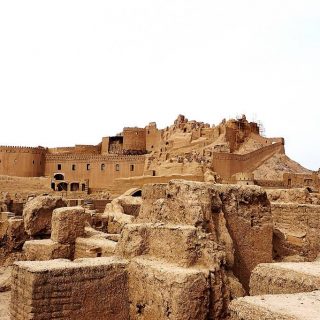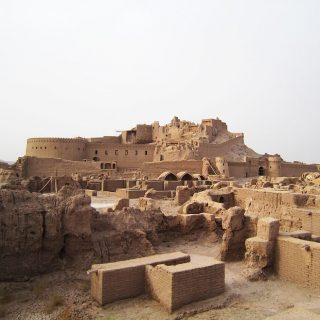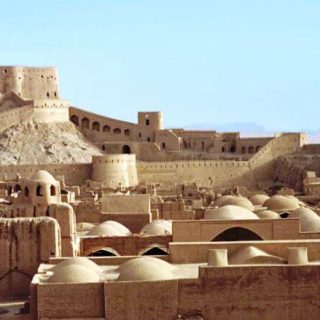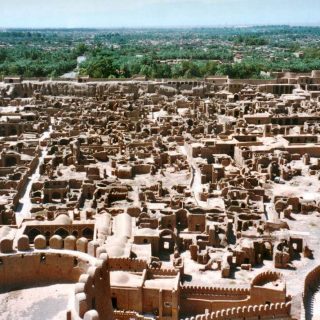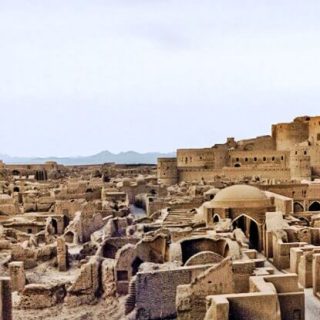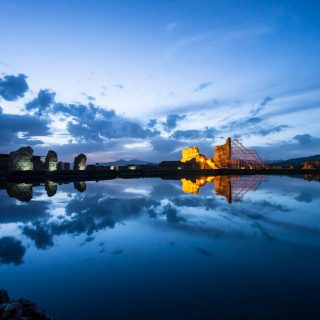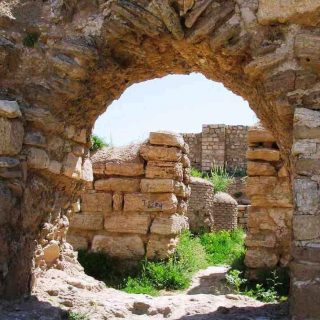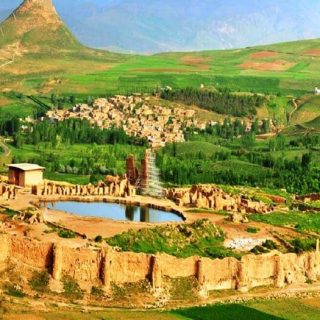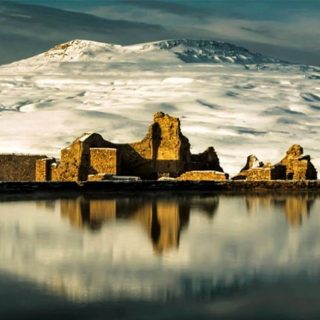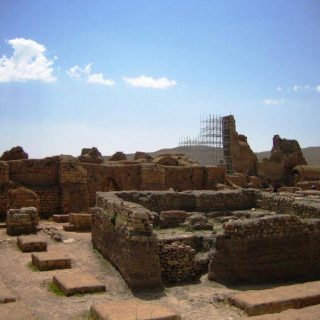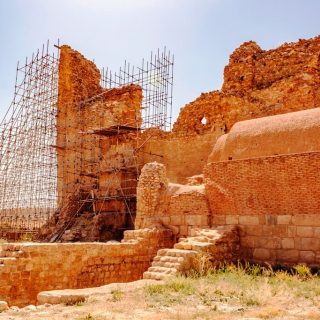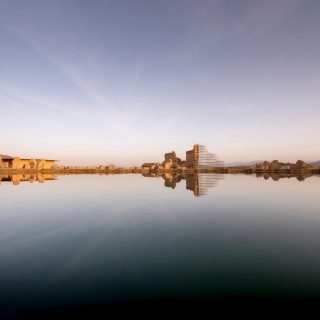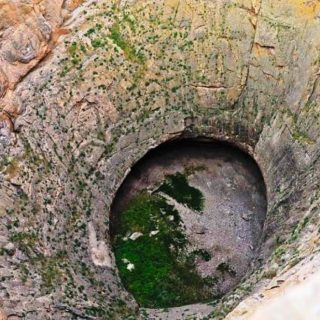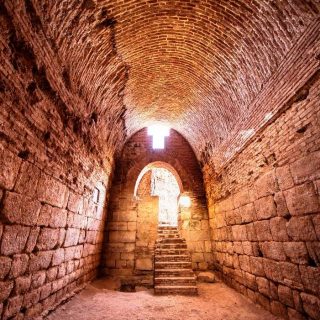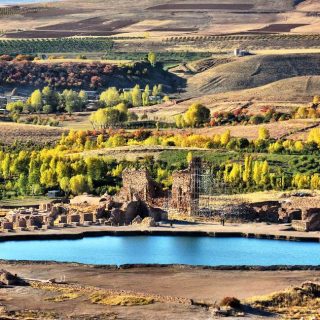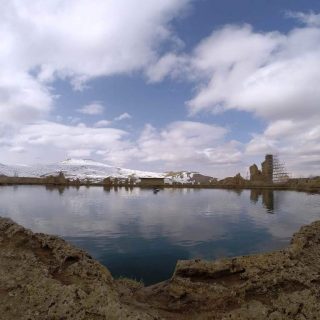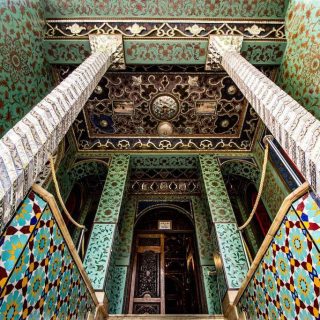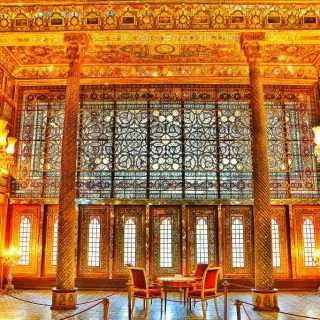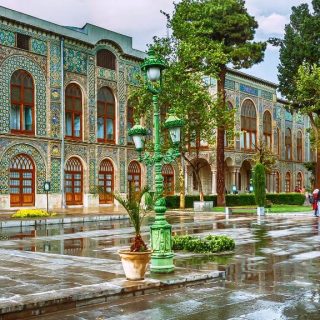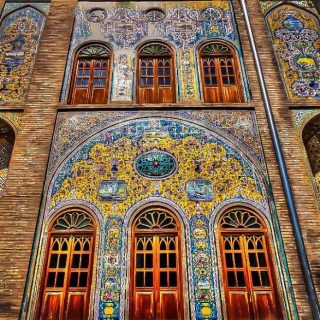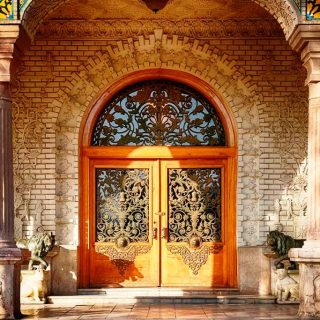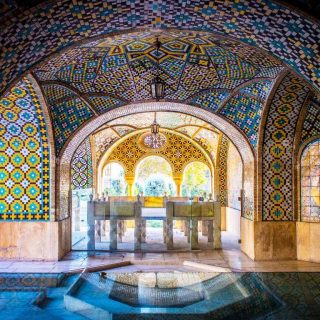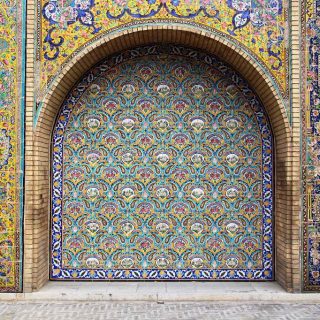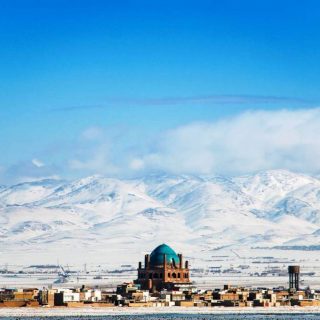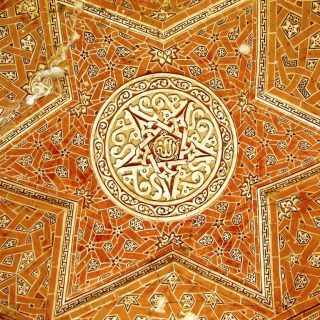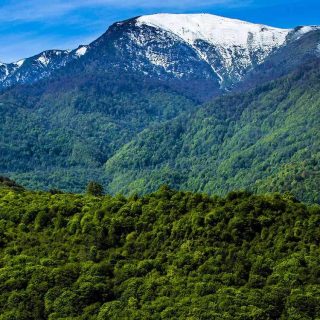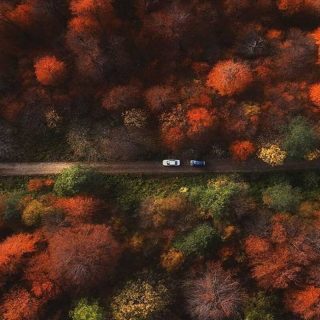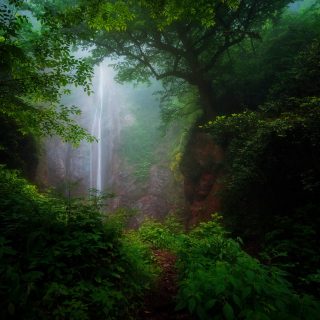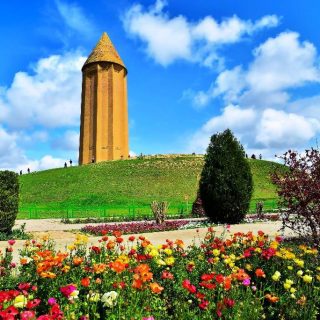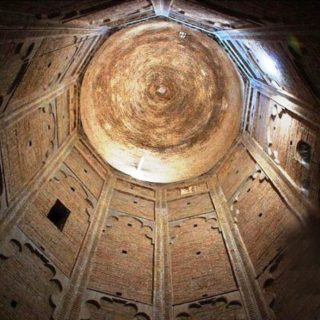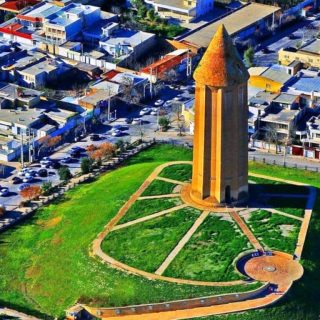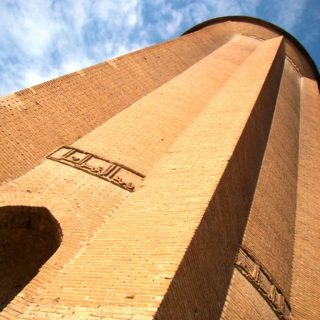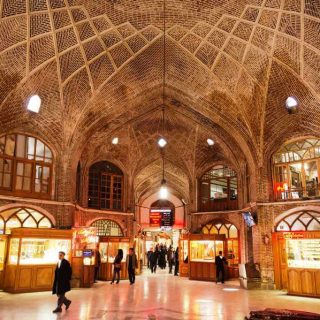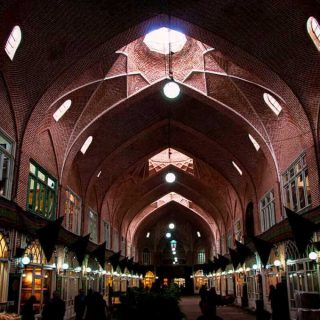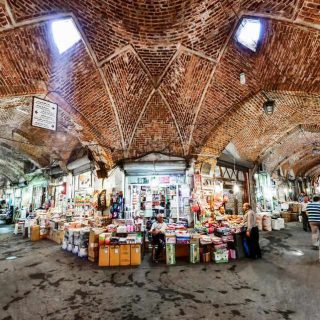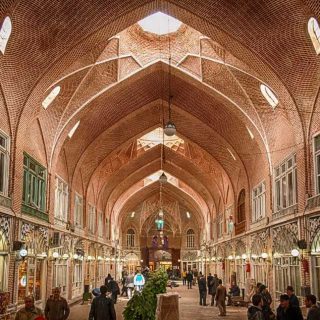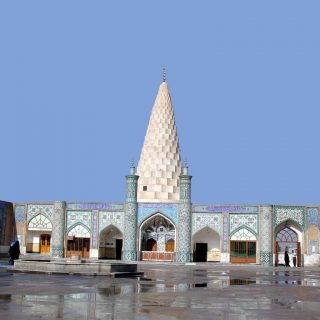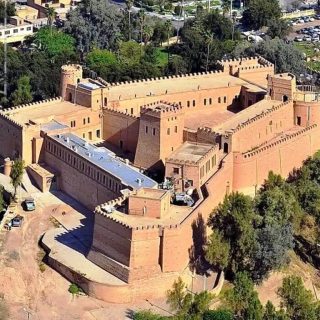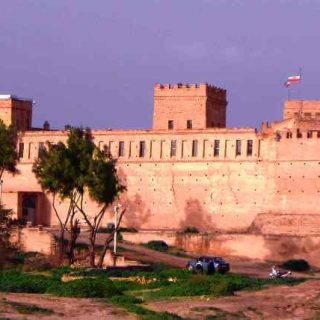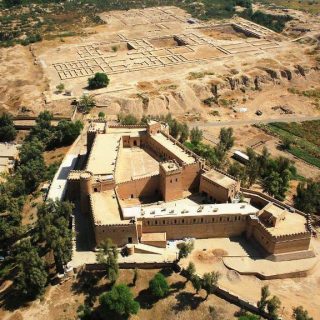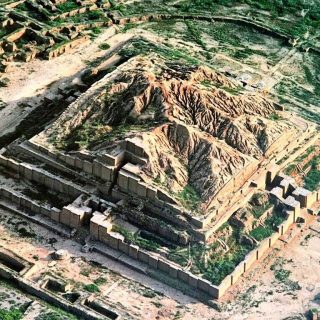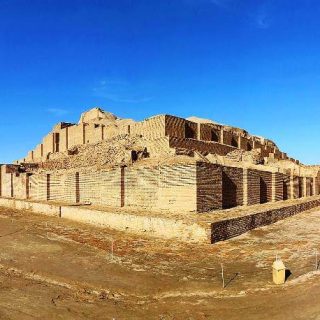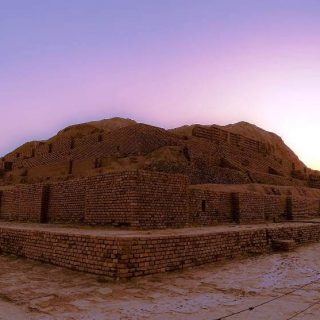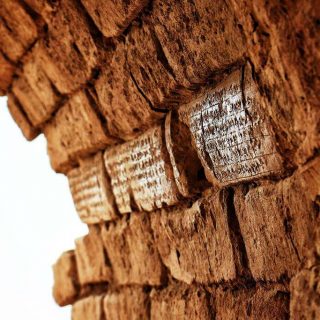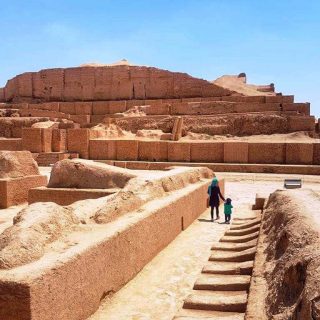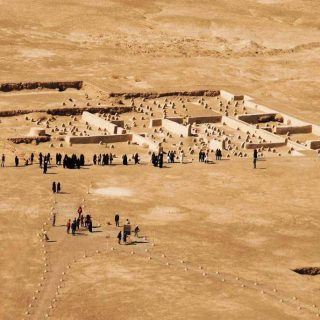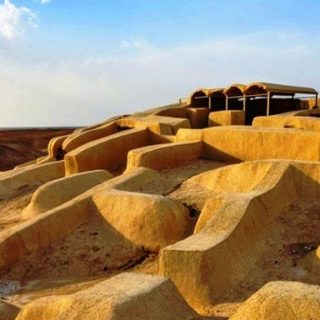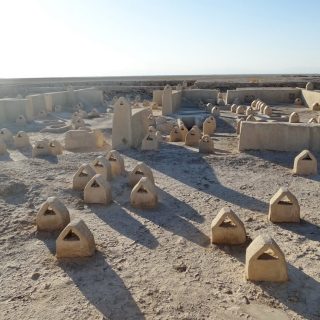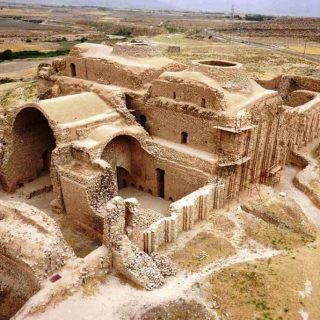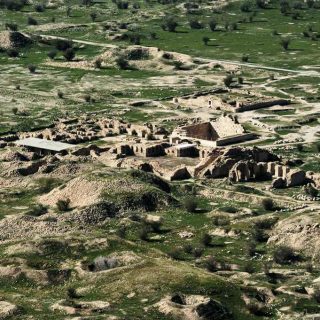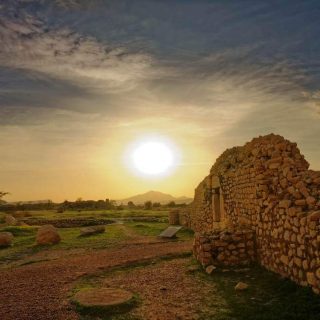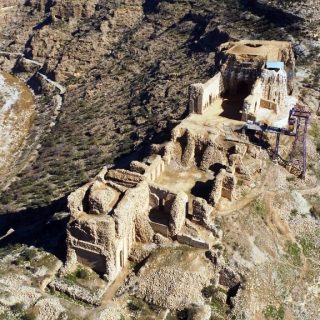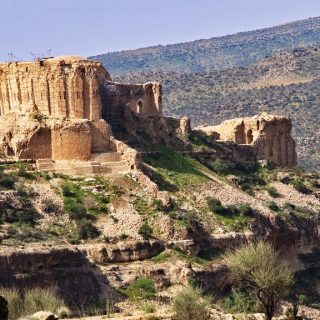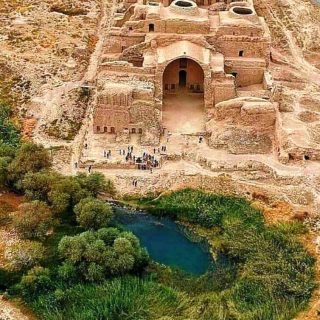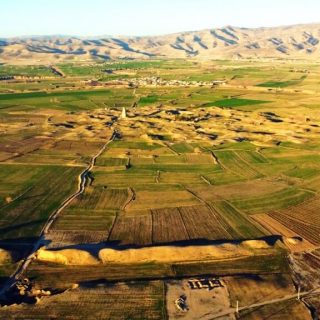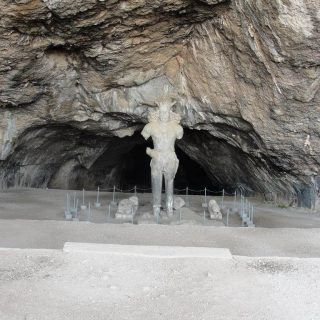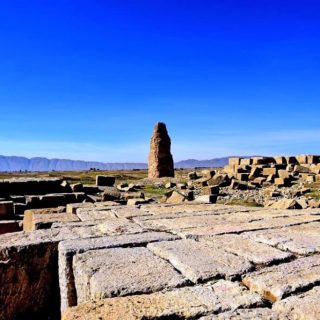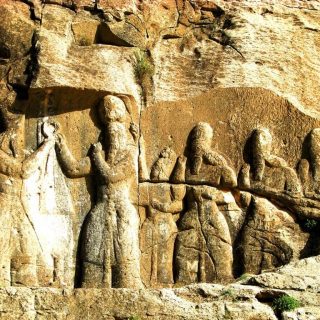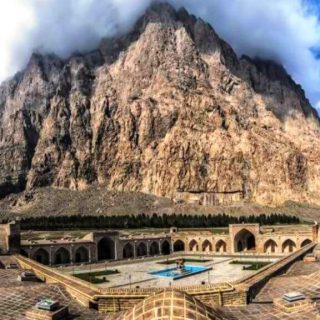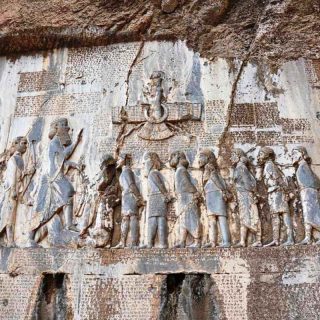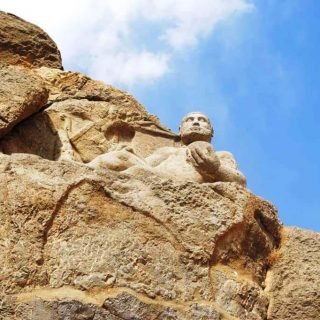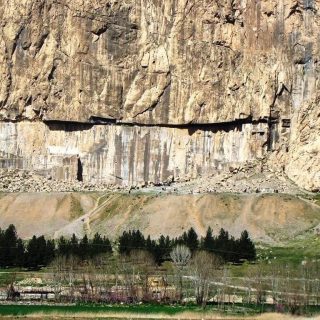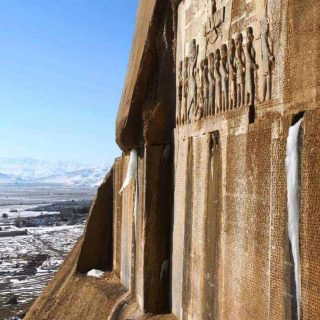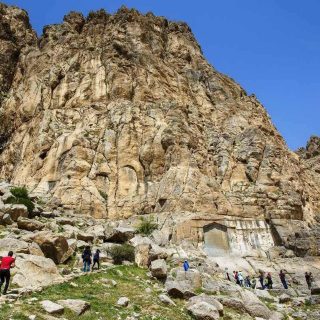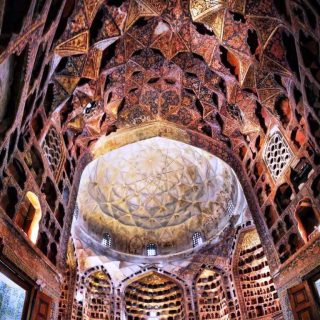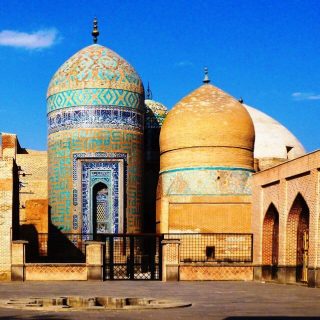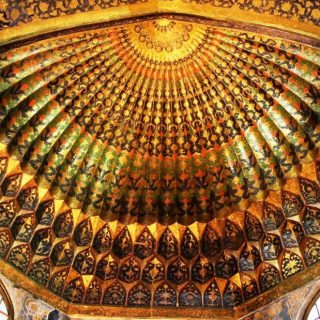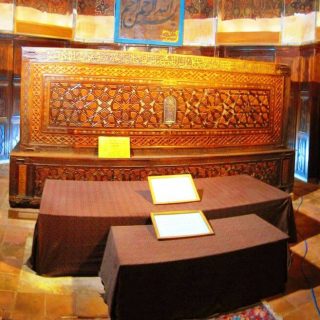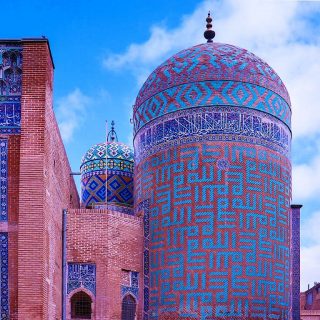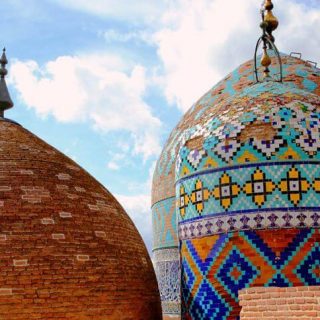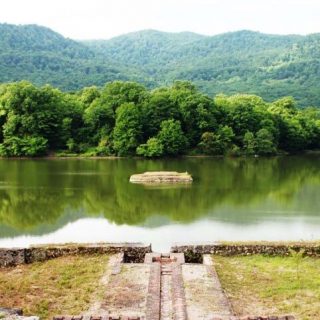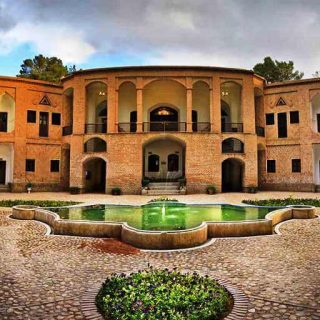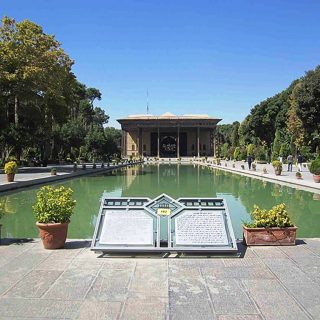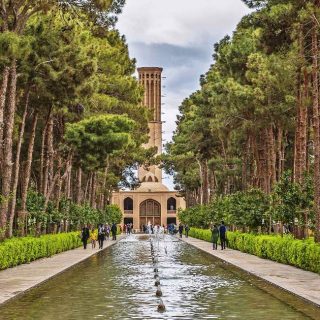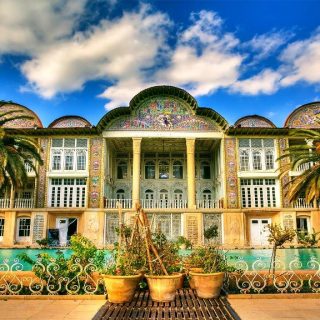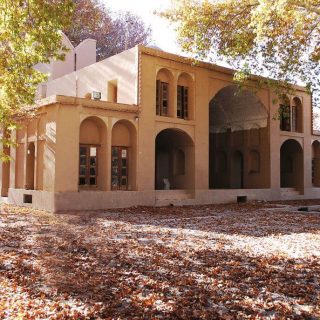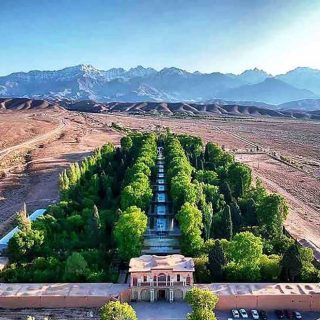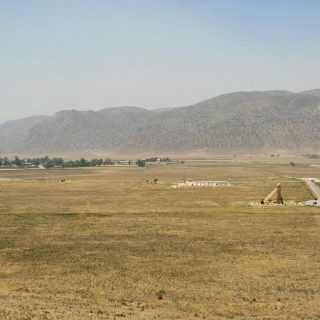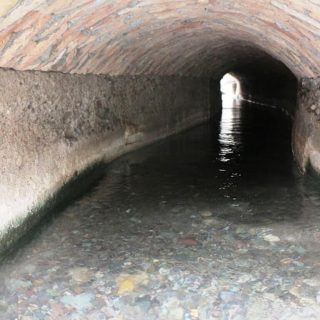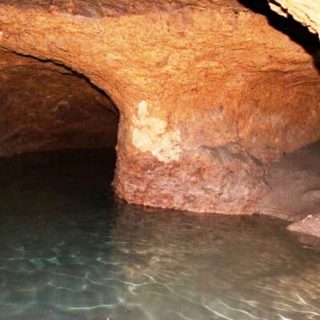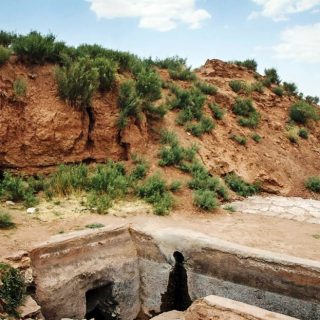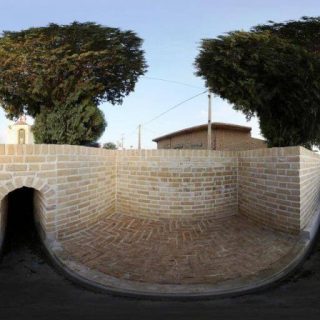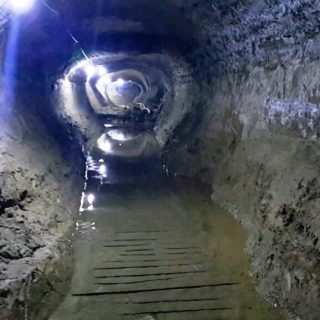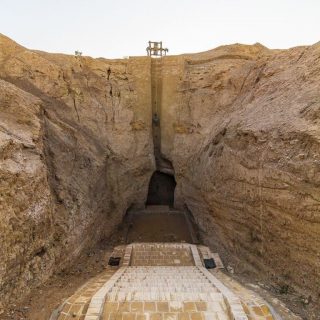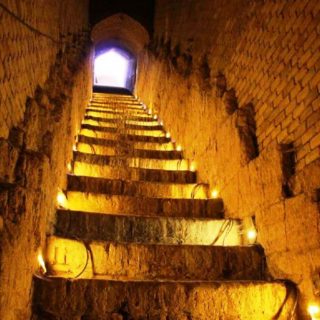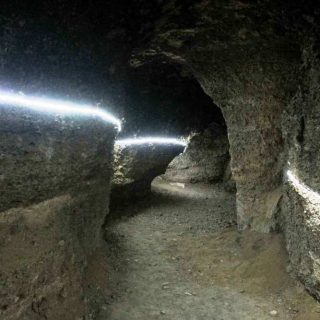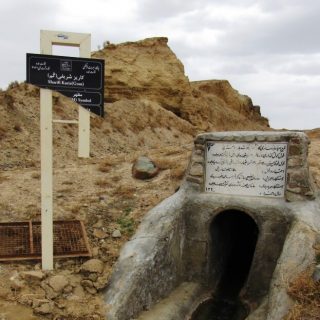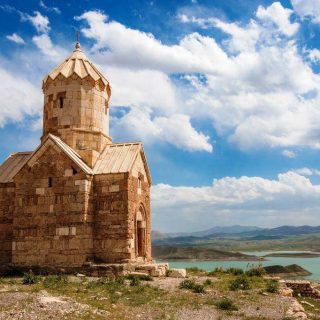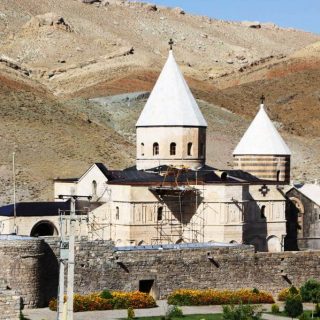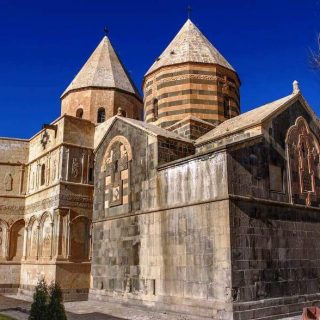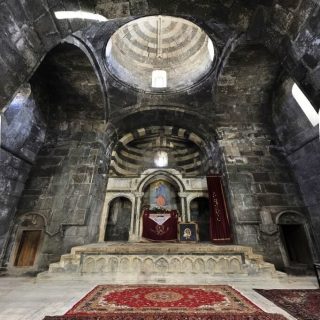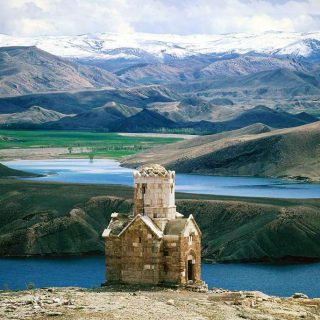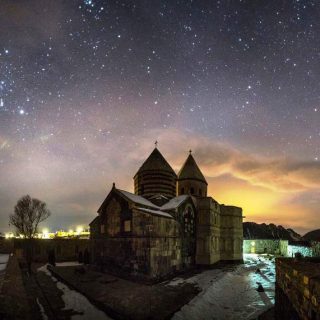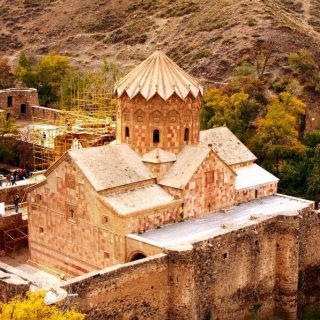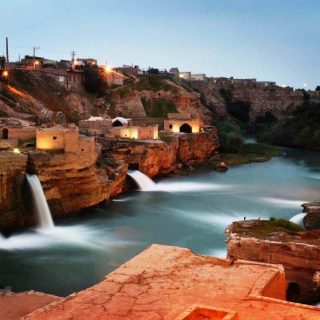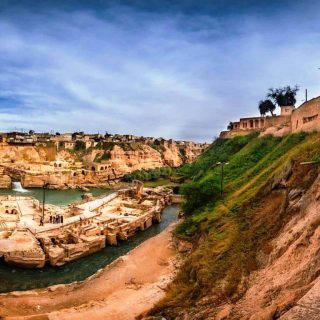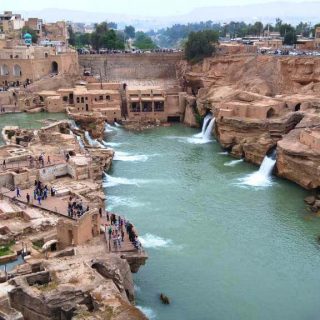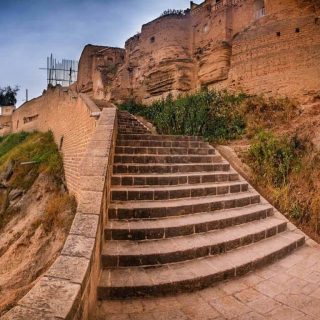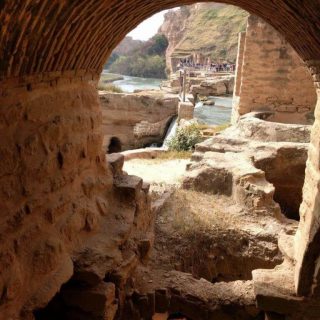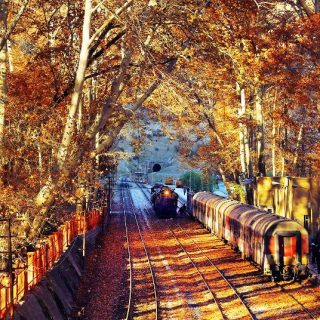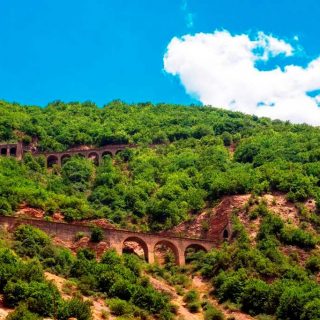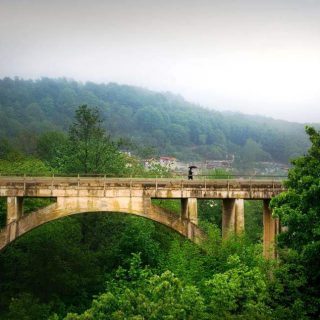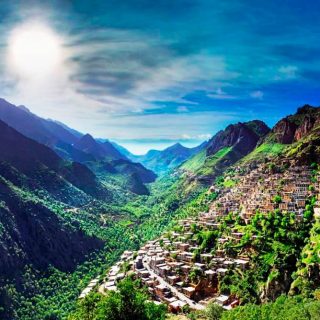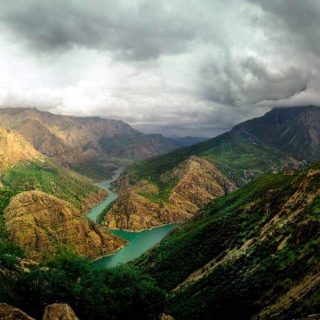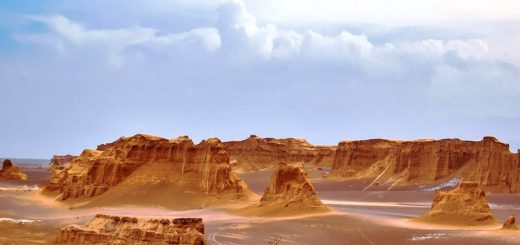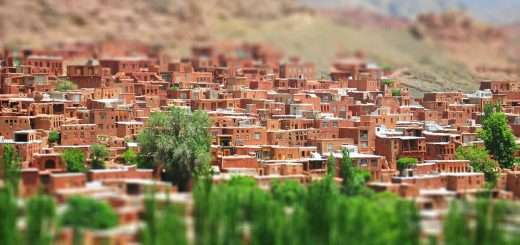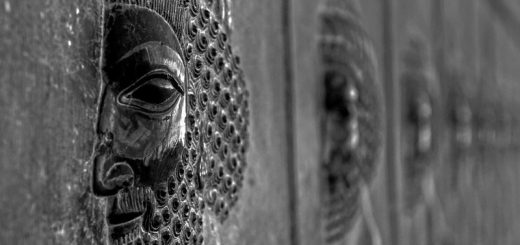Iran UNESCO Sites
by Admin · November 21, 2020
Iran UNESCO Sites, What you need to know as a Tourist

You may have heard of this title before, but exactly “What is a UNESCO World Heritage site?” In short, UNESCO World Heritage Sites are places of extraordinary cultural, historical, natural, and scientific value, and UNESCO awards this distinction. The purpose is to protect and preserve these valuable sites for the next generations. Proudly, Iran, with 26 UNESCO-registered sites, stands at the 10th rank. They vary from monuments to historical and cultural landscapes and incredible natural views. Here, we have compiled the list of UNESCO World Heritage Sites in Iran; some are in the main cities or near them, and the others are a little offbeat. Based on the information we present here, you can plan your visit to Iran according to your interests and preferences.
Iran, among the Top 10 Countries with Most UNESCO Sites
Iran, among the Top 10 Countries with most UNESCO Sites
In general, UNESCO World Heritage Sites belong to all human beings on the planet, regardless of race, nationality, or religion. So, the governments have to protect and preserve these monuments for the next generations.
Notably, the high number of UNESCO World Heritage Sites reflects the historical, natural, and cultural value of a country. In addition, the more UNESCO sites in a country, the more tourists are welcomed, resulting in the development of that country’s tourism industry.
In this regard, countries are trying to submit more sites to UNESCO for inclusion in this list.
Here you can find the list of countries with the highest number of UNESCO World Heritage Sites.
Notably, Iran, with 26 UNESCO-registered sites, ranks 10th on the list.

26 Iran UNESCO World Heritage Sites on Map
On this map, you can see how the 26 Iran UNESCO World Heritage sites are scattered all over the country. By knowing the location of these UNESCO sites on the map, you can plan your Iran trip in such a way that you can include the visit to some of these valuable sites. Moreover, when you are in Iran, you can see how far is the nearest Iran UNESCO site to where you stay.
Also please note that the entrance fee of the Iran UNESCO sites is about 2 euros.
Finally, we are here to plan your Iran tour so that you can get the best out of your Iran trip. So, do not hesitate to contact us.
Persepolis (Takht-e Jamshid)
Do you want to know one of the most powerful empires in the ancient world? You will have this chance on your travel to Iran in Shiraz. In 70 km northwest of Shiraz stands one of the magnificent Iran UNESCO World Heritage Sites called Persepolis, a key to one of the most powerful empires in the ancient world, the Achaemenids.
Accordingly, Persepolis or Takht-e Jamshid, the Achaemenids (550–330 BC), one of the world’s largest empires. This significant monument indicates the majesty and greatness of Iran during the Achaemenid Era. Darius I the Great ordered to build Persepolis as the capital of his empire, and in terms of architecture and structure, it is a masterpiece in the world. The columns and rock engravings in this Iran UNESCO site represent old Iran’s glory and fascinate every visitor. Accordingly, Persepolis’s platform includes the Audience Hall of the Apadana and the Gate of Xerxes, the Throne Hall, the Palaces of Darius and Xerxes, etc. Finally, in 330 BC, Alexander the Great sent his army to Persepolis through the Royal road and destroyed this polis. In 1979 UNESCO register the ruins of Persepolis as the UNESCO World Heritage Site.
Date of Inscription
1979
Category
Cultural
Location
Fars Province
The Nearest Major City
Shiraz,
with 70 km distance
OPENING HOURS
Every day, 8:30 to 19:30 in spring and summer, 7:30 to 17:30 in fall and winter
Pasargadae
If you have visited the British Museum, you have seen the Cyrus Cylinder, the first declaration of Human Rights, one of the most precious and oldest objects in the world. Cyrus The Great (559–530 BC), the founder of the Achaemenid Dynasty, admired due to his respect for human rights and the humane treatment in his kingdom, carved the first declaration of Human Rights on Cyrus Cylinder. He finally rested in peace in Pasargadae, his capital, located at 134 km north of Shiraz. Now tomb of this great man still stands after 25 centuries in Pasargadae Complex and is the most significant monument in this ancient polis.
Accordingly, Pasargadae is the capital of Cyrus the Great, the first Achaemenid capital, and now one of the significant UNESCO Heritage Sites in Iran. Cyrus The Great built this complex in a Persian garden (Chahar Bagh). Although the garden does not exist today, it has inspired famous Persian gardens.
The compound was inscribed as UNESCO World Heritage Site in 2004 and includes the tomb of Cyrus, Soleyman Prison, Tale-e Takht fortified platform, and archaeological ruins of palaces such as Private and Audience palaces
Date of Inscription
2004
Location
Fars Province
Category
Cultural
OPENING HOURS
Every day, 8:30 to 19:30 in spring and summer, 7:30 to 17:30 in fall and winter
The Nearest Major City
Shiraz,
with 134 km distance
Naqsh-e Jahan Square (Meidan Emam)
Naqsh-e Jahan Square (Imam Square) is the central square of Isfahan and a historical complex belonging to the Safavid era (1501-1736). What distinguishes this square from its counterparts is its rectangular shape, which differs from typical squares’ circular or oval appearance.
It is interesting to know that Naqsh Jahan Square, with 560 meters length and 160 meters width, is wider than Moscow Red Square. This magnificent square is historically superior to Concorde Square in Paris and is the second-largest square in the world after Tiananmen Square in Beijing.
Naqsh-e Jahan Complex is one of Iran UNESCO World Heritage Sites, which includes a square surrounded by significant historical monuments.
Upon entering the Naqsh-e Jahan Complex, you will encounter a large pond in the middle of the square and numerous passages. On both sides of this square, the magnificent Imam Mosque, and the beautiful Sheikh Lotfollah Mosque stand, and at its other side, there is the spectacular Ali Qapu Palace. Besides, the entrance of Isfahan Grand Bazaar is from this square that invites you to a different historical world.
Around the Naghsh-e Jahan Square, numerous stalls offer colorful Persian handicrafts. Besides, there are stone benches in the square where you can sit and immerse yourself in the life of the people of Isfahan for a moment.
Date of Inscription
1979
Category
Cultural
Location
Isfahan
Opening Hours
* Naghsh-e Jahan Square: Open 24 Hours
* Shah Mosque: Every day, 9:00 to 12:30 and 14:00 to 18:00 in spring and summer, 9:00 to 11:30 and 13:00 to 16:00 in fall and winter
* Sheikh Lotfollah Mosque: Every day, 9:00 to 12:30 and 14:00 to 18:00 in spring and summer, 9:00 to 11:30 and 13:00 to 16:00 in fall and winter
* Ali Qapu Palace: Every day 9:00 to 18:00 in spring and summer, 9:00 to 16:30 in fall and winter
* Qeysarie Bazaar: Every day except Friday 9:00 to 18:00 in spring and summer, 9:00 to 16:30 in fall and winter
Historic City of Yazd
Have you ever visit Venice, the first historical city in the world? And do you know the second town on the list?
Yazd is the first adobe city and the second historical city in the world after Venice, Italy. Also, Yazd is the third most attractive city in Iran after Shiraz and Isfahan, and together with these two cities, it forms the golden triangle of tourism in Iran.
The historical context of Yazd with about 800 hectares is the most extensive in the history of Iran. The ancient people of Yazd had learned the coexistence with the region’s hostile environment and arid nature. Accordingly, they built their residences with sun-dried bricks and designed windcatchers to let the airflow in the houses and keep them cool. Hence, due to numerous windcatchers in Yazd adobe city, it is also known as “The City of Windcatchers.”
Some other features of Yazd’s old context include the dense and compact texture and the houses that are located near each other without distance, and narrow and covered alleys.
Although artifacts from the Elamite and Median periods have been discovered in Yazd, this city’s construction is attributed to the Sassanid period. During the Sassanids, this region had a unique social and economic status, and much attention was paid to its development.
Yazd is now one of the UNESCO world heritage sites in Iran, which houses many valuable monuments such as Amir Chakhmagh Complex, ancient water reservoir, Jame Mosque of Yazd, Alexander Prison, etc.
In addition to strolling in this historic city, you can also buy this region’s handicrafts as Iran souvenirs. In this regard, carpets, rugs, Glim, gold, tents, Shamad, Ziloo, bag, pottery, ceramics, tiles, Give, etc. are among the famous Yazd souvenirs. Besides, traditional Yazd sweets such as Baghlava, Qottab, Pashmak, Loz, and Haji Badam have many fans.
Date of Inscription
2017
Category
Cultural
Location
Yazd
OPENING HOURS
Open 24 Hours
Cultural Landscape of Maymand
Did you know that only four rocky villages have been identified in the world so far? These villages include Cappadocia in Turkey, Dakota in the United States, and Meymand and Kandovan in Iran that just the two villages in Iran that are currently inhabited.
Meymand or Maymand, located in Shahr-e Babak of Kerman Province, is one of the must-see Iran villages.
The historical evidence indicates that people have been living in Meymand since 3000 years ago. However, the stone carvings found in the villages belong to about 10,000 years ago. Due to this site’s historical value, “Cultural Landscape of Maymand” has been inscribed on the Iran UNESCO World Heritage Sites list.
The villagers of Meymand live in cave-dwelling carved houses that are called Kicheh. There are about 405 “Kicheh” s in Meymand village with a total of 2560 rooms. Nobody still knows which ethnic group has constructed the village of Meymand. Also, it is not even clear what caused this kind of house-building in the cliffs’ heart. However, these cave-house dwellers’ life can narrate the story of this ancient city. It seems like that time stopped years ago in Meymand, where life is so primitive. The interaction between humans and nature can still be observed, and ancient traditions have been preserved.
Actually, Meymand village is an ancient region that, along with rocky houses, has other historical monuments such as temples, towers, and castles.
As mentioned, Maymand is similar to the rocky village of Kandovan. However, there is a difference between Kandovan and Meymand; the chambers in Kandovan are more vertically while “Kicheh” s in Meymand are more horizontally.
Finally, visiting Meymand village can be an authentic experience. Accordingly, trekking around, meeting locals, tasting the local food, and sleeping on a rocky bed in one of those fantastic cave houses are all Iran travel experiences that you cannot ever forget.
Date of Inscription
2015
Category
Cultural
Location
Kerman Province
The Nearest Major City
Kerman, with 279 km distance
OPENING HOURS
Open 24 Hours
Jame Mosque of Isfahan
(Masjed-e Jāmé of Isfahan)
Isfahan is one of the most spectacular cities in Iran, and the oldest historical monument of this city, namely the Jame Mosque of Isfahan, or Masjed-e Jāmé of Isfahan, is one of the prominent religious and historical places in Iran.
Today, this mosque includes different parts, each of which represents the course of architectural art in different periods of Iran and the evolution of Iranian architecture. In this regard, different parts of the Isfahan Grand Mosque have been formed over two thousand years and have been rebuilt during these years.
Finally, the mosque’s current appearance is mainly related to the Seljuk period, but its renovations are related to later periods, especially the Safavid era. Besides, archaeological excavations have discovered artifacts belonging to before Islam, and they indicate that this monument was previously a Zoroastrian fire temple.
In terms of architecture, this mosque is one of the architectural masterpieces in Iran and the world. The four porches around the square are characteristic of the Iranian mosque-building method, which has been popularized in other Iranian mosques later. The use of Muqarnas decorations tilework and plasterwork has doubled the beauty of this mosque.
Due to the Jame Mosque of Isfahan’s historical, architectural, and cultural value, it is one of the UNESCO sites in Iran.
Date of Inscription
2012
Category
Cultural
Location
Isfahan
OPENING HOURS
Every day, 9:00 to 18:00 in spring and summer, 9:00 to 16:30 in fall and winter. Break for praying is from 12:00 to 14:00
Lut Desert (Dasht-e Lut)
Are you interested in visiting one of the hottest points on the earth or the planet’s highest sand dunes? Or maybe you are eager to see the tallest natural pots in the world. The Dasht-e Lut in Iran is a collection of all of these extraordinary natural appearances and more. Without a doubt, it is a sin to leave Iran without visiting the Dasht-e Lut desert, one of the UNESCO World Natural Sites in Iran.
The Dasht-e Lut, Lut plain, or Lut desert covering about 10% of Iran’s territory includes parts of Kerman, South Khorasan, and Sistan and Baluchestan provinces. The north-south length of this plain is 900 km, and the west-east width is 300 km.
Located in the earth’s thermal pole, the Lut Desert set the record for the warmest temperature (above 70 degrees Celsius) on earth in 2005. This point is a region near Shahdad, which is very hot due to its sand’s dark color and excessive dryness.
Along with being excessively hot and arid, there are significant geographical and natural features in the Dasht-e Lut. Due to this desert’s value, it has been registered as one of the Iran UNESCO Sites.
Accordingly, the most important natural features in the Lut Desert are as per below.
- Kalut (Yardang), which is located in a large area in the western part of Lut plain; They are like hills that have created the appearance of a mysteriously abandoned city in Lut. Due to its proximity to Shahdad in the Kerman province, the Kalut region is also called the Shahdad desert
- Rig-e Yalan, which is an area covered with high sandhills that some of them reach a height of 480 meters. The second world’s tallest sand pyramids with up to 300 meters high are located in Libya.
- Hammada that is a large area of flat sand located near the road of Shahdad to Nahabandan. Interestingly, there is no plant in this area.
- Chaleye Lut (the hole of Lut) is a vast and desert area in the center of Lut. This area’s surface is uneven due to canals, waterways, holes, and cracks.
- Gandom Beryan, which is a relatively large area with an area of about 150 square kilometers, at the western part of the central plain of Lut. Black basalt rocks cover this area.
- Rood-e Shur (Kal Shoor river) is another beautiful phenomenon in the middle of the Lut desert. The density of salt in this water is so high that it has the same concentration as yogurt in some areas. On its way, Rude shur has created fantastic natural features such as salt beaches and alluvial plains.
- Nebkhas (Nebkas) that cover a large part of Lut plain near Shahdad consist of desert trees perched on high dunes.
Date of Inscription
2016
Category
Natural
The Nearest Major City
Kerman
OPENING HOURS
Open 24 Hours
Location
Kerman, South Khorasan, and Sistan and Baluchestan provinces
Bam and its Cultural Landscape
Do you know the largest adobe building in the world is in Iran? Bam Citadel or Arg-e Bam, the most massive adobe citadel in the world, is one of the most valuable historical masterpieces of Iran. The predecessors built this huge complex on big rocks near the city of Bam in Kerman province. This building was built before the 5th century BC and had inhabitants until 1850 AD.
In 2003, a severe earthquake occurred in the area, causing extensive damage to this UNESCO site of Iran. After that, many countries helped Iran to rebuild this valuable monument of Iran. Among these countries, Japan, France, Italy played significant roles.
The whole building of Bam Complex is a large fortress, and the Bam Citadel is at the center. However, due to this citadel’s majesty, located in the highest part of the complex, the whole fortress building is called Bam Citadel.
This Iran UNESCO site is about 180,000 square meters, which is surrounded by walls with a size of 6 to 7 meters. The architecture of this ancient city consists of two parts:
1- The administration section, which is located at the center, inside the inner wall. This part includes a military fortress, a four-season mansion, a barracks, 40-meter water well, and stables with 200 horses’ capacity.
2- The peasant section, which surrounds the administration section and includes the city’s main entrance and the main path connecting the entrance gate to the fort and the bazaar. Moreover, about 400 houses and public buildings such as schools and sports venues are in this neighborhood.
Date of Inscription
2004
Category
Cultural
Location
Kerman Province
The Nearest Major City
Kerman, with 192 km distance
OPENING HOURS
Every day, 9:00 to 19:00
Takht-e Soleyman
(Throne of Solomon)
The legends say that this place was built by Suleiman the Prophet (AS), and his ring is hidden there. The mysterious Sassanid complex of Takht-e Soleyman is one of the most important Iran cultural sites, which is registered on the UNESCO World Heritage List. This historical complex houses famous monuments belong to 1600 years ago.
Takht-e Soleyman complex is located 148 km from Zanjan and 42 km from Takab and includes the following attractions.
Azargoshnasb Fire Temple: It is the most significant fire temple of the Sassanid era and a symbol of religious, political, and social authority.
Anahita Temple: It has been a place of worship for the goddess of water.
Khosrow porch: This porch is quite similar to “Iwan Madaen” in design, with smaller dimensions. Unfortunately, its arches and muqarnas were severely damaged by an earthquake that occurred 80 years ago.
Sassanid fence: This circular defensive fence, with 38 towers and a length of 1120 meters, surrounds the area’s monuments.
Soleyman Prison (Zendan-e Soleyman): In the west of the Takht-e Soleiman complex, you will see a 100 meter-height hill known as “Suleiman Prison.” The remains of structures such as rooms, stairs, and terraces belonging to the millennium BC, indicate that this place was sacred.
Holy Lake: In the center of the ancient site of Takht-e Soleyman, there is a beautiful, deep lake. Since the intensity of the sediments in the lake does not allow diving deep, there are many secrets about it. In this situation, strange myths and stories are created that the most interesting ones are a per below:
- A treasure of Cyrus the Great is buried in the depths of this lake.
- There are treasures from the Parthian period in this lake.
- Before the overthrown of Solomon, the priests had dumped the treasures into the lake so that the enemy would not have access to them.
- And in the end, the legends say that Solomon’s ring is still in this lake.
Date of Inscription
2007
Category
Cultural
Location
Western Azerbaijan Province
The Nearest Major City
Zanjan, with 146 km distance
OPENING HOURS
Every day, 9:00 to 18:00 in spring and summer, 9:00 to 17:00 in fall and winter
Golestan Palace
Welcome to the only UNESCO World Heritage Site of Tehran, the capital of Iran. Golestan Palace is one of the most visited and beautiful tourist destinations and one of the oldest historical palaces in Tehran.
This palace is a collection of valuable monuments that have been built at different periods from the Safavid era until the time of Qajar and Nasser al-Din Shah Qajar. Golestan Palace is one of the most famous UNESCO sites in Iran in terms of architecture, history, and culture, which hosts numerous tourists from all over the world.
Today the complex consists of 17 palaces, halls, and museums, that the most important of which are summarized below.
1- Complex’s Yard: you can not miss the outdoor of the complex with tall trees, colorful tiles, pools, and fountains that offer picturesque sceneries. There is also a small market near the entrance that takes you to Persian handicrafts’ colorful world.
2- Shams-ol Emareh (Edifice of the sun), the ancient symbol of Tehran: Shams-ol Emareh is a high and magnificent building that is one of Golestan complex’s most significant monuments. This edifice is known as one of the symbols of the old Tehran.
Nasser al-Din Shah-e Qajar was fascinated by buildings and skyscrapers in Western countries during his trips to Europe. So he ordered the construction of a high building that, from its top, he could see Tehran’s view and the surrounding landscape. Therefore, Shams-ol Emareh edifice with a height of 35 meters on five floors was built. Interestingly, the decoration and design of this building are impressive.
3- Marble Throne (Takht-e Marmar), the oldest part of the complex: Marble Throne (Takht-e Marmar), the oldest building of the Golestan Complex, belongs to the Zandieh period. This part is decorated with delicate plasterwork, masonry, mirror work, etc.
Moreover, with its beautiful carvings, the marble throne is like the Solomon throne on the shoulders of the fairies.
4- Salam Hall or Museum Room: Salam Hall, which is part of the main hall, is a royal museum with lovely decoration built by Nasser al-Din Shah.
5- Mirror Hall (Talar-e Ayne): The Mirror Hall was built as a part of the museum building in the main hall. Today, you can see an oil painting of the late Kamal-ol-Molk, which shows the hall’s image during the Qajar period.
Brilliant Hall (Talar-e Brelian), Containers Hall (Talar-e Zorouf), and Ivory Hall (Talar-e Adj) are other parts of the main hall.
6- The building of Windcatchers (Emarat-e Badgir): You can see attractive paintings and mirror works in the hall of Emarat-e Badgir. But the most important part of this mansion is the four tall windbreaks, which are decorated with blue, black, and golden mosaic.
Date of Inscription
2013
Category
Cultural
Location
Tehran
OPENING HOURS
Every day, 9:00 to 17:30 (entrance till 16:30) in spring and summer, 9:00 to 16:30 (entry till 15:30) in fall and winter
Soltaniyeh Dome
Have you ever seen the Church of Santa Maria in Italy, Florence? And do you know that the Soltaniyeh Dome in Iran inspired its architecture?
On the Qazvin-Zanjan highway, a turquoise dome stands in a short distance from Zanjan, a critical historical monument in the development of Islamic architecture. Soltanieh Dome is a prominent example of Iranian architecture. It is said that this building was built to be used as the tomb of the eighth Ilkhanid king, Sultan Mohammad Khodabandeh, or Öljeitü. However, no trace of his grave has ever been seen in this monument.
The dome of Soltanieh is one of the UNESCO sites of Iran, which is known as the third-highest dome in the world after the Church of Santa Maria in Italy and the Hagia Sophia in Turkey. Also, this dome has the title of the largest historical dome in Iran. On the other hand, Soltanieh Dome is currently the second-largest brick dome in the world.
Architecturally, the main body of the dome and the whole building is made of brick. But the dome is decorated with turquoise and azure tiles as if it is wearing a glowing turquoise garment. In the southern part of the dome, the remains of a mosque can be seen. The altar of this mosque has been decorated with plasterworks.
It is interesting to know that in the Soltanieh dome, for the first time in the history of Iranian architecture, the art of tiling has been used in a complex and detailed level.
Date of Inscription
2005
Category
Cultural
Location
Zanajn Province
The Nearest Major City
Zanjan, with 44 km distance
OPENING HOURS
Every day, 9:00 to 19:00 in spring and summer, 8:00 to 17:00 in fall and winter
Hyrcanian Forests
Although we have seen dinosaurs only in movies, you can visit the forests that are the same age as dinosaurs by traveling to the north of Iran. In the south of the Caspian Sea from Mazandaran to Gilan, Gorgan, and Arasbaran, valuable Hyrcanian forests are located with a history of more than 40 million years. The area of these forests is 55,000 square kilometers, of which two million hectares are located in Iran and 20,000 hectares in the Republic of Azerbaijan. This jungle stretches from seashore to mountains with an altitude of about 2800 meters.
In Iran, Caspian Hyrcanian mixed forests are like a green ribbon at the Caspian Sea border, situated in Mazandaran, Gilan, and Golestan.
Hyrcanian forests, which are among the UNESCO World Heritage Sites in Iran, are valuable forests that create clean air and water storage and are home to various animals and birds.
Finally, one of Hyrcanian forests’ unique landscapes can be seen in the cloud forest or Jangale Abr in Shahroud. Due to its specific location, there is a sea of clouds in this jungle; It is as if you are walking on clouds.
Date of Inscription
2019
Category
Natural
OPENING HOURS
Open 24 Hours
Location
Provinces of Mazandaran, Gilan and Golestan
Gonabad-e Qabus (Qabus Tower)
Gonabad-e Qabus or Gonbad-e Kavus, a tall tower, is one of Iran’s fantastic historical structures located in northeastern Iran in Golestan province. This monument, the tallest brick tower globally, is one of the Iran UNESCO heritage sites.
It is interesting to know that Qabus Tower dating back to the Ziarian Era is made entirely of bricks and, with a height of about 55 meters, is known as one of the best architectural works in human history. However, the reason for the construction of such a unique structure is still unclear. A lot of research has been done to discover the use of this building; Some inscriptions indicate that the current building was originally the grave of Qabus, the Al-Ziyar ruler, while there is evidence among the historical books explaining that the building was an observatory.
On the other hand, a group of experts believes that the Qabus Dome is a “Mil,” a tall structure to guide travelers to the city in ancient times.
The tower’s diameter gradually narrows from 17 meters to 15.5 meters and eventually reaches a beautiful dome. A unique feature that distinguishes this tower from other examples is its 10-flanged geometry that indicates the development of mathematics and architects’ intelligence in the first millennium AD.
Outside the Gonbad-e Qabus Tower, there is a circular area that if you are standing in its center and shout, your voice will be echoed and heard much louder.
Generally, in the construction of this Iranian UNESCO site, the strength was much more considered than decoration. In this regard, like its simple exterior decoration, its interior is unadorned, and only there is a layer of plaster on the walls. Of course, muqarnas works and inscriptions in Kufic script around the tower are decorative Qabus Dome features.
Date of Inscription
2012
Category
Cultural
Location
Golestan Province
The Nearest Major City
Gorgan, with 92 km distance
OPENING HOURS
Every day, 8:30 to 19:00
Tabriz Historic Bazaar Complex
How does it like to go shopping in ancient times?
Tabriz Bazaar is one of the world’s oldest markets and has been one of the principal trade hubs on the ancient Silk Road. Moreover, Tabriz Historic Bazaar is the largest covered bazaar globally and one of the UNESCO cultural sites in Iran.
Walking under the tall arches and Muqarnas domes, in the long corridors, is like reviewing a thousand years of memory, a thousand years of life. And if you look closely, you can see the ups and downs of ten centuries of Iranian life and business in the bazaar of Tabriz.
Marco Polo has passed through these corridors, Ibn Battuta probably bought something from one of these shops, and Clavijo might have been amazed by this masterpiece of Iranian architecture. Listen! You can hear the Silk Road’s ancient traders bargaining over spices, fabrics, and Persian carpets; You can hear the caravans’ commotion, on their way from the East to Andalusia, settling in this complex.
Tabriz Grand Bazaar is a perfect symbol of the sustainable socio-economic structure with a length of one kilometer. And for many years, this market has been a great symbol of the Iranian trade’s combination and life in the 4,000-year-old Tabriz city. Accordingly, this complex consists of 6500 stores, 11 corridors, 25 Timchehs (small Caravanserai), and several mosques, schools, and baths.
Finally, if you travel to Tabriz, be sure to visit this grand market and buy colorful Iran souvenirs, including handmade Persian carpets, nuts, leather products, spices, etc.
Date of Inscription
2010
Category
Cultural
Location
Tabriz
OPENING HOURS
Every Day, 10:00 to 17:00, Most of the Shops are Closed on Friday
Susa (Shush)
The ancient city of Susa or Shush was one of the most important old civilization centers and the Elamites’ legendary capital for thousands of years. Also, it was the winter capital of the Achaemenid Empire. This ancient polis, located in Khuzestan province, north of the Persian Gulf, is also one of the most valuable UNESCO heritage sites in Iran.
Susa has been the capital from about 2700 BC until the end of the Achaemenid Empire (for over 3000 years). But after the devastating Mongol invasions, the city became less habitable. So far, valuable documents about the Elamites have been extracted from the mud and brick inscriptions in Shush. The mud inscriptions are about the land trades, wills, adoptions, etc. The French have published them in four volumes.
On the other hand, the brick inscriptions, mostly used in the temples’ walls, were about the Susa people’s ancient gods. Also, based on these brick inscriptions, in Elam and the whole East, Women, like men, had the power to sign documents and trade.
The ancient site of Susa, with an area of 800 hectares, includes the Shahoor Palace, the Eastern Gate, Apadana Palace, the city of the fifteenth, Hadish, Achaemenid village, Susa Mosque, the complex of the Islamic period buildings, the French castle, and Acropolis hills.
Besides, the shrine of the Prophet Daniel, one of the prophets of Bani Israel who lived in the seventh century BC, is on the banks of Shahoor river. Accordingly, you can see the name of Susa in the bible as the home to Daniel.
On the other hand, the archaeological site of Haft Tappeh is located about 15 km southeast of Susa. In this area, an Elamite tomb belongs to almost two centuries before Chogha Zanbil and has the first arched roof in the world.
Date of Inscription
2015
Category
Cultural
Location
Khuzestan Province
The Nearest Major City
Ahvaz, with 117 km distance
Opening Hours
* Shush Castel: 9:00 to 20:00 in spring and summer, 8:00 to 17:30 in fall and winter
* Shush Museum: 9:00 to 19:00 in spring and summer, 8:00 to 18:00 in fall and winter
Chogha Zanbil Ziggurat
(Tchogha Zanbil)
In the 13th century BC, Untash Napirisha, the Elamite king, ordered the construction of the city “Dur Untash.” There were palaces, temples, royal tombs, a water treatment plant in this ancient city, etc. The most important structure of this brick city is the Ziggurat of Chogha Zanbil temple, located in the center and the highest point of Dur Untash.
The Tchogha Zanbil Ziggurat near Susa’s ancient city is undoubtedly a unique example of the glorious history and civilization of Iran in ancient times. This ziggurat was the first Iranian religious building and a temple built by the Elamites for their gods.
The word “Chogha Zanbil” in Farsi is composed of two words, “Chogha” meaning hill and “Zanbil,” meaning basket, and this temple is like an inverted basket standing on a hill. This building was built on five floors with a height of 52 meters. Only two stories with a height of about 25 meters have remained. Besides, the Chogha Zanbil plan is a 105*105-meter square, twice the area of a football field! The ruins of Chogha Zanbil have been registered as one of the Iran UNESCO sites.
Interestingly, around Chogha Zanbil, three circular brick buildings were used to be a kind of solar clock. Accordingly, using this exotic structure, they could calculate the years and seasons and extract the calendar.
Furthermore, another impressive structure of this ancient polis is its water supply system. About 3500 Years ago, Elamites built a 45-kilometer canal from the Dez River to the town. The water was accumulated in a large reservoir outside the city and then passed through several layers of sand, gravel, etc. to become purified.
Date of Inscription
1979
Category
Cultural
Location
Khuzestan Province
The Nearest Major City
Ahvaz, with 125 km distance
Opening Hours
8:00 to 19:30 in spring and summer, 8:00 to 18:30 in fall and winter
Shahr-e Sukhteh (Shahr i Sokhta)
Do you know what the first animation in the world was and where it was produced? Have you ever heard of the world’s first artificial eye or ancient brain surgeries?
Shahr-e Sukhteh or Shahr i Sokhta, meaning “Burnt City,” is the remains of the mudbrick city that is one of the Iran UNESCO sites located in Sistan and Baluchestan province. It is an archaeological site situated at the junction of Bronze Age trade routes in southeastern Iran. Shahr-e Sukhteh is one of the world’s earliest urban communities and complex societies dating back to about 3200 BC. Accordingly, the evidence of excavations in the ruins of the Burnt City represents the mysterious and high technology of an ancient civilization.
Interestingly, 310 tombs have been discovered in this city that have revealed many ancient human civilizations’ secrets. The most interesting of these discoveries is known as the Shahr-i Sokhta eye. Accordingly, a body belonging to a woman about 25 to 30 years old with an artificial eye found that research on her body has indicated the first eye operation in 4,800 years ago.
Moreover, brain surgery in this area is another attraction of Shahr i Sokhta. Accordingly, a skull belonging to a 13-year-old girl has been found, indicating that doctors at the time removed part of the girl’s head and operated on her brain.
Besides, in this UNESCO site, fabrics in different colors and genders, fishing hooks, all kinds of pottery, a ruler, backgammon, clay water pipes, etc. have been discovered. All these objects and evidence show that Burnt City has enjoyed great prosperity and progress. The people of this ancient polis were so advanced in art and industry that they became world-famous and had good relations and cooperation with the neighboring cities and countries.
Finally, the Shahr-e Sukhteh pottery is precious and famous. Accordingly, a pottery vessel has been found in Shahr-e Sookhteh with an image of a goat and a tree engraved on it, known as Shahr-e Sukhteh animation. These images show a goat running towards the trees and eating their leaves. According to investigations, this is the first animation in the world.
Date of Inscription
2014
Category
Cultural
Location
Sistan and Baluchestan Province
The Nearest Major City
Zahedan, with 173 km distance
Opening Hours
8:00 to 19:00 in spring and summer, 9:00 to 17:00 in fall and winter*
*The Shahr-e Sukhteh museum is closed from 12:00 to about 15:00
Sassanid Archaeological Landscape of Fars Region
Sassanid Archaeological Landscape of Fars Region, an Iran UNESCO World Heritage Site, refers to eight Sassanid archaeological sites in the Fars Province. These sites belong to 224 to 658 AD, include ancient polis, monumental buildings, and inscriptions located in three areas, i.e., Sarvestan, Kazeroon, and Firuzabad. The sites are as per below:
1- Sarvestan Sassanian Palace (Sassan Palace): This Palace stands about 90 km southeast of Shiraz in the Sarvestan region. It is also known as Ghasr-e Sasan or Chartaghi (a square-shape structure with four arches and dome) and used to be a residence or a fire temple.
2- Bishapur Ancient city: This ancient city lies on the Shapur river banks in the vicinity of Tang-e Chogan in Kazerun county. It was built by the order of Shapur I, the king of the Sassanid Dynasty. There are castles, rock relieves, and numerous structures in this Persian monument.
3- Shapur Cave and the Colossal Statue of Shapur I: One of the most impressive monuments of the Sassanid collection of Fars Region is Shahpour cave and the colossal statue of Shapur I inside it. This cave is located in Kazerun County, four kilometers from Tang-e Choogan in the Shapur River’s altitudes. The Shapur I statue is carved on a natural stalactite and is about 6.70 meters high, and its shoulder width is about 2 meters. You can also see the details of each part of the body, such as the congresses on the crown and the hair waves.
4- The Ancient City of Ardashir-Khwarrah or Shahr-e Gour, in Firouzabad: The city of Ardeshir Khwarrah in the middle of the Firoozabad plain is the most important Sassanid monument in this area. The ancient architects dried up part of the swamp to create the city, and by transferring water from the Tangab River, they expanded agriculture around the city. Interestingly, this ancient city’s map is entirely circular, which can be seen well in aerial images.
5- Palace of Ardeshir or Ardeshir Papakan Palace, in Firouzabad: The second important Sassanid monument in Firoozabad plain after Ardeshir Khwarrah is Ardeshir Palace, which is also known as Ardeshir Fire Temple. In fact, Ardeshir Palace was the official residence of the Sassanid king outside the city of Ardeshir-Khwarrah.
6- Qal’eh Dokhtar, or Ghale Dokhtar (Dokhtar Castel), in Firouzabad: The castle was built as a defensive fortress in 224 AD. Dokhtar Castle stands near the road, and its structure extends on the mountain slopes. In general, Ghale Dokhtar has 2300 square meters of infrastructure and is made of the stone carcass, plaster, and mortar.
7- Two Rock Reliefs of Ardeshir in Firouzabad: The first one is the rock relief of Ardeshir Babakan (224 to 241 AD), the founder of the Sassanid Dynasty located one kilometer from Qal’eh Dokhtar. To build this lithograph, Ardeshir established the tradition of carving among the kings of this dynasty. Finally, the second one is the rock relief of Ardeshir I’s victory over Ardavan V, located near the Firoozabad plain.
Date of Inscription
2018
Category
Cultural
Location
Fars Province
Opening Hours
Every Day, About 8:00 to sunset
The Nearest Major City
* Sarvestan Sassanian Palace (Sassan Palace): Shiraz, with 132 km distance
* Bishapur Ancient city: Shiraz, with 146 km distance
* Shapur Cave and the Colossal Statue of Shapur I: Shiraz, with 154 km distance
* The Ancient City of Ardashir-Khwarrah or Shahr-e Gour, in Firouzabad: Shiraz, with 114 km distance
* Palace of Ardeshir or Ardeshir Papakan Palace, in Firouzabad: Shiraz, with 104 km distance
* Qal'eh Dokhtar, or Ghale Dokhtar (Dokhtar Castel), in Firouzabad: Shiraz, with 100 km distance
* Two Rock Reliefs of Ardeshir in Firouzabad: Shiraz, with 100 km distance
Bisotun (Behistun Inscription)
Did you know that you can find the Hercules statue and a large multilingual inscription in Iran’s mountains?
The Behistun Inscription, also known as Bisotun, or Biston, is a multilingual inscription and a huge rock relief in Mount Behistun in western Iran near Kermanshah. Behistun inscription is the story of victories and a bit of political bragging founded by Darius The Great (522–486 BC). Actually, by inscribing this relic, he established the legitimacy of his claim to Cyrus the Great’s throne. In other words, Darius the Achaemenid left his words in different languages as a valuable relic for human beings on the inscription of Bisotun.
The Behistun Inscription includes a rock relief and a text carved 100 meters up a cliff which can not be seen from the bottom. Since the inscription lies in an inaccessible height, it is believed that Darius authored the history of his victories not for the people of his time but the future. Hence, it is one of the valuable Iran UNESCO sites.
Another of the most important historical monuments in the Bisotun area of Kermanshah is the statue of Hercules. Hercules is a mythical figure in Greece who was a symbol of courage and masculinity. Hercules’ statue in Behistun with the length of one meter and forty-seven centimeters, dates back to about 153 BCE. Interestingly, Hercules’ statue has long, curly roots and rests on a lion skin, holding a cup in his hand.
Surprisingly, behind Hercules’ sculpture is an inscription in Greek with carvings of a bow, an arrow, and an olive tree. There is also a large mace next to the olive tree.
Date of Inscription
2006
Category
Cultural
Location
Kermanshah Province
The Nearest Major City
Kermanshah, with about 38 km distance
Opening Hours
8:00 to 20:00 in spring and summer, 9:00 to 17:00 in fall and winter
Sheikh Safi Al-Din Ardabili Shrine
(Sheikh Safi al-Din Khānegāh and Shrine)
Sheikh Safi al-Din Khānegāh and Shrine is located in Ardabil, northwestern Iran. Khanegah or Khaneghah is a place of residence, education, and dervishes and Sufis activity.
The complex of Sheikh Safi al-Din Ardabili, one of the UNESCO heritages in Iran, reflects the Islamic architecture in the Middle Ages. This building was originally a place of worship. It later housed the body of Sheikh Safi al-Din Ardabili (the Safavid sultans’ ancestor and the founder of Sufism) and several Safavid grandees. In addition to Sheikh Safi al-Din Ardabili, Shah Ismail I (the first Safavid king), his wife, and the wars’ martyrs are also buried in this complex.
Sheikh Safi gained many followers by founding this Safavid Khaneghah in Ardabil. In this monastery, he gathered Sufis to worship and educate and help the poor. He was also involved in poetry and literature.
Nowadays, This Iran UNESCO site consists of the tomb, the tower of Allah Allah, the old cemetery, the archeology museum of Ardabil, etc.
This ensemble manifests the most beautiful and eye-catching types of tilework and muqarnas, plaster, and beautiful and exquisite inscriptions. Besides, irreplaceable inlays, silverwork, gilding, painting, etc. are other decorations in this cultural heritage of Iran. Among all parts of this complex, the decorations of Chini Khaneh Hall (Porcelain House), particularly its plasterwork, is magnificent.
Besides, “Ardabil Carpet,” one of the most famous and exquisite carpets in the world, was found in the tomb of Sheikh Safi al-Din, which is included in the list of 50 selected works of art in the world. Interestingly, this rug is now in the Victoria and Albert Museum in London and is kept under a particular condition.
Date of Inscription
2010
Category
Cultural
Location
Ardabil
Opening Hours
8:30 to 19:30 in spring and summer, 8:00 to 17:30 in fall and winter
The Persian Garden
One of the most interesting Iran UNESCO sites is the collection of the Persian gardens, located in some parts of Iran. The different structures and architecture of these gardens make them extraordinary and reflect Iranian architects’ intelligence.
In short, Persian gardens have unique architecture and elements such as geometric structure, water flow, pool, various trees, and the mansion.
Nine of the Iranian gardens that have been inscribed on the UNESCO World Heritage List are listed below.
1- Pasargadae Garden in Marvdasht: It is the oldest Persian garden or the mother of Iranian gardens in the Pasargadae World Collection. It is also the root of the architecture of Persian gardens and the basic model of Iranian gardening.
2- Eram Garden in Shiraz: This garden is a gorgeous botanical garden. However, there is no information on the exact date of construction and the founder of Eram Garden.
3- Shazdeh Garden in Mahan: This fantastic garden, located in Kerman province, is like an emerald in the heart of the Lut desert. Notably, the irrigation system and the architecture of this garden are outstanding.
4- Chehelston Garden in Isfahan: This garden with towering trees, a large pool, and the reflection of the image of its spectacular mansion in it are among the famous attractions of photographers.
5- Fin Garden in Kashan: This garden is a beautiful green area with high walls, separated from the city. Aqueducts and canals provide the water needed for this large garden.
6- Abbas Abad Garden in Behshahr: Located in the Alborz Mountains foothills, Abbas Abad Garden is the most important non-desert garden in Iran. Moreover, this Persian garden is situated on a natural hill; the Safavid engineers cut this hill and built it in three steps.
7- Dolatabad Garden in Yazd: Dolatabad Garden is one of the most original Persian gardens built in the late Afshari period. Interestingly, the tallest brick windcatcher in the world stands in this garden.
8- Akbarieh Garden in Birjand: This Iranian garden is located in a mountainous bed, and its architecture is a combination of Russian and Islamic architecture.
9- Pahlavanpour Mehriz Garden in Yazd: This garden, dating back to the Qajar period, manifests the changes in ancient Iranian gardening to the current modern gardening.
Date of Inscription
2011
Category
Cultural
Location
* Pasargadae Garden: Marvdasht, 110 Km northeast of Shiraz
* Eram Garden: Shiraz
* Shazdeh Garden: Mahan, 39 Km southeast of Kerman
* Chehelston Garden: Isfahan
* Fin Garden: Kashan
* Abbas Abad Garden: Behshahr, 65 Km from Sari
* Dolatabad Garden: Yazd
* Akbarieh Garden: Birjand
* Pahlavanpour Mehriz Garden: Mehriz, 47 Km south of Yazd
Persian Qanat
Aqueduct, Qanat, or Kariz in the Persian language is a 3,000-year-old engineering miracle in arid regions. It is an underground water management system. Aqueducts direct water for kilometers to reach the ground surface. It is interesting to know that the Iranians are the aqueduct’s inventors, the best way to collect and manage groundwater. Notably, this technology spread through the Silk Road to Morocco and Spain.
Although many of Iran’s aqueducts have dried up, there are still approximately 40,000 live aqueducts in Iran. Among them, 11 aqueducts below are on the list of Iran UNESCO sites.
1- Zarch Qanat in Yazd: With more than 100 km length, the Zarch aqueduct is the longest qanat in Iran, A Qanat with 2115 wells, and a 70-step path. Zarch was built on an 80-km track at a depth of 23 meters. Moreover, it is estimated that this aqueduct is about three thousand years old.
2- Qasabeh Qanat of Gonabad (Ghasabe Qanat): This aqueduct is the deepest globally, dating back to more than 2500 years ago. It is like a magic labyrinth or a time tunnel.
3- Baladeh Ferdows Aqueduct: The aqueduct is in the historic city of Ferdows in South Khorasan Province and is more than 37 km long. This aqueduct, which has a different technology from other aqueducts in Iran, dates back to the Sassanid era.
4- Hassanabad aqueduct: The seven hundred-year-old Qanat-e Hesabad is located in Mehriz, Yazd, and on the Pahlavanpour Garden UNESCO site.
5- Goharriz Aqueduct: with a diameter of 750 years, it is 3556 meters long and has 129 wells and irrigates about 330 hectares of garden lands in Jopar city of Kerman.
6 & 7- Akbarabad and Qasemabad Aqueducts of Bravat Bam: Twinness is the difference between this aqueduct. These two aqueducts, located in Bam, Kerman, have a total length of about 3500 meters.
8- Moon Ardestan Aqueduct: It is the only two-story aqueduct in the world that dates back to 800 years ago.
9- Vazvan Aqueduct: This aqueduct is located in Vazvan city of Isfahan province, which is about 2500 to 3000 years old. This large aqueduct used to have three disciplines and has impressive engineering.
10- Ebrahimabad Arak Aqueduct: This aqueduct is more than 900 years old and 11 km long. Ebrahimabad Arak aqueduct is one of the country’s oldest aqueducts, which has a very complex structure.
11- Mozdabad Aqueduct of Isfahan: This aqueduct, with a length of 18 km and a depth of 100 meters, is similar to underground water discharge, underground river drainage. On the other hand, it is similar to Ali Sadr Cave in Hamedan in terms of stalagmite. This 2,000-year-old aqueduct is the second oldest aqueduct in Iran.
Date of Inscription
2016
Category
Cultural
Location
* Zarch Qanat: Yazd
*Qasabeh Qanat of Gonabad (Ghasabe Qanat): Gonabad, 215 Km north of Birjand
* Baladeh Ferdows Aqueduct: Ferdows, 186 Km from Birjand
* Hassanabad aqueduct: Mehriz, 47 Km south of Yazd
* Goharriz Aqueduct: About 30 Km south of Kerman
* Akbarabad and Qasemabad Aqueducts of Bravat Bam: 200 Km southeast of Kerman
* Moon Ardestan Aqueduct: 129 Km northeast of Isfahan
* Vazvan Aqueduct: 100 Km north of Isfahan
* Ebrahimabad Arak Aqueduct: 40 Km east of Arak
* Mozdabad Aqueduct of Isfahan: 120 Km north of Isfahan
Armenian Monastic Ensembles of Iran
Do you know that there are about 600 churches in Iran that many of them have cultural, religious, and historical values?
There have been various religions in Iran throughout history. Accordingly, Armenians and Christian Assyrians are all Iranians who have preserved their historic churches as memorials over the years.
When we move toward the north and northwest of Iran, we can see more historic churches. Three of these churches are listed among the Iran UNESCO sites. They are known as Armenian Monastic Ensembles of Iran, located in the West Azerbaijan and East Azerbaijan provinces in Iran. The Armenian Monastic Ensembles of Iran is still a living place of pilgrimage for Christians.
The three churches on the list of UNESCO world heritage sites in Iran are as per below.
1- St. Thaddeus Monastery or Qare Kelisa (Black Church) is one of the world’s oldest churches, located in the mountainous area of West Azerbaijan Province, about 20 kilometers from the Chaldoran town. This Iranian heritage was constructed over Saint Thaddeus mausoleum between the 4th and 6th centuries. Moreover, Qare Kelisa is one of the most beautiful and ornamented Armenian churches in Iran. Its building consists of two parts: the old section in black color and the new section in white color added to the old building in 1810.
2- Saint Stephanos Monastery is the second important Armenian church in Iran after Qareh Kelisa. this church dates back to about the 9th century. This orthodox monastery is located 15 km from the city of Julfa in the province of East Azarbaijan. Also, it is in a canyon along the Aras River and close to northwest Iran’s borders.
Finally, the church itself and its surrounding nature are one of the must-see attractions in northwest Iran.
3- Chapel of Dzordzor or St. Mary Church is the third famous church in Iran, located in the West Azarbaijan province near Maku City. This church has a Cross shape and belongs to 1298 AD. Interestingly in 1987, due to the construction of a dam, the monastery was moved about 600 meters to a high place.
Date of Inscription
2008
Category
Cultural
Opening Hours
* St. Thaddeus Monastery or Qare Kelisa (Black Church): Every day, 9:00 to 20:00 in spring and summer, 9:00 to 17:00 in fall and winter
* Saint Stephanos Monastery: Every Day, 8:00 to 19:00 in Spring and Summer, 8:00 to 17:00 in Fall and Winter
* Chapel of Dzordzor or St. Mary Church: Every Day, 8:00 to 19:00 in Spring and Summer, 8:00 to 17:00 in Fall and Winter
The Nearest Major City
* St. Thaddeus Monastery or Qare Kelisa (Black Church): Tabriz, with 224 km distance
* Saint Stephanos Monastery: Tabriz, with 230 km distance
* Chapel of Dzordzor or St. Mary Church: Tabriz, with 250 km distance
Shushtar Historical Hydraulic System
“Madam Jane Dieulafoy, the famous French archaeologist, has referred to Shushtar Hydraulic System as the greatest industrial complex before the Industrial Revolution.”
It would not be an exaggeration to consider the hydraulic System of Shushtar as one of the wonders of the ancient world.
This historical complex is one of the rarest engineering structures in the world, located in Shushtar, Khuzestan, and dates back to the Sassanid era. Moreover, this ancient engineering masterpiece has been inscribed on the UNESCO World Heritage List.
Shushtar Historical Hydraulic System reflects the genius and high knowledge of the ancient Iranians in hydraulic engineering. They have made proper and principled use of water resources by managing and controlling water. Accordingly, this complicated system transferred the Karoon river’s water to the houses and agricultural lands.
Each of the elements in this structure has a specific application and forms an interconnected complex, connecting to the other parts. These components include bridges, dams, mills, waterfalls, canals, sika, which is a place for rest, and colossal water tunnels. Over time, many components of Shushtar water structures have been destroyed by floods and other factors.
Shushtar Historical Hydraulic System supplied water equally to the entire city and prevented the Karoon River’s eruption. They also provided cool air and used for irrigating agricultural lands and rotating the mills to produce wheat flour.
Finally, Salasel Castle, or the ancient fortress of Shushtar, is the oldest part of this UNESCO site in Iran, which dates back to the Achaemenid period. In addition to having a defensive role for the city, this castle was used to control the river water.
Trans-Iranian Railway
The 25th UNESCO Heritage Site in Iran (registered in 2021) is the Trans-Iranian Railway, which connects the north to the south of the country. Iran’s Trans Railway can be considered a turning point for economic, commercial, cultural, social, and political developments in the world’s contemporary history.
This railway with a length of 1394 km and 90 stations connects the Caspian Sea in the north to the Persian Gulf in the south.
It starts from the Turkmen port on the Caspian Sea shore and enters Tehran after passing through the marvelous nature of the Hyrcanian forests and the Alborz Mountains.
Following the route, after crossing the flat areas of Qom and Arak, the Trans-Iranian railway enters the Zagros Mountains in Lorestan province. Then, passing through the pristine mountainous regions, it enters the plain of Khuzestan.
Finally, passing through Ahvaz, the Trans-Iranian Railway is divided into two branches. One ends in the Khorramshahr Port and the other ends in Imam Khomeini Port on the Persian Gulf Shore.
Date of Inscription
2021
Category
Cultural
Location
Iran (North to South)
The cultural Landscape of Uramanat
Uramanat (Huraman, or Uraman or Hawraman) is a historical region with a stepped texture and unique cultures located in the Kermanshah and Kurdistan provinces in western Iran. There are about 700 villages in this area.
Located in a mountainous region, Uraman houses roaring rivers, springs, valleys, and pastures. Besides, there are beautiful gardens in the foothills of the Uramant Mountains.
The Kurdish inhabitants of the Hawraman region have lived in interaction with nature for thousands of years, and this interaction can be seen in the stepped gardens, the stepped architecture, the traditional celebrations and rituals, the unique handicrafts, and so on. Notably, the handicrafts of the Uraman region are kilims, rugs, felt, wooden utensils, etc.
During your trip to Iran, you can stay for one or two days in one of the beautiful villages of this region, such as Palangan, Oraman Takht, Hajij, etc. There you can enjoy the region’s unique nature, get involved with the life and customs of the local people, and try local dishes.
Date of Inscription
2021
Category
Cultural
Location
Kurdistan and Kermanshah Provinces, Iran
Opening Hours
Every Day, 24 Hours
Like this article?
Subscribe To Our Newsletter
Get updated articles about Iran trip


